

the Constant Disconnection between Veterans, Examiners, and the RO Can Result in Decades of Wrongful Denials




the Constant Disconnection between Veterans, Examiners, and the RO Can Result in Decades of Wrongful Denials

From solo practices to large firms, legal professionals across the Memphis area trust BankTennessee for personal service, tailored banking solutions, and a genuine understanding of their unique needs. As the premier sponsor of the Memphis Bar Association almost 20 years, we’ve built our reputation as the bank for the legal community — one relationship at a time.
Discover why BankTennessee is the choice for many legal professionals! Talk to us today.
With



BRENNAE L. BROOKS, ESQ
KENNETH W. BRASHIER
CLAUDIA WILLIAMS HYMAN

the magazine of the Memphis Bar Association
Memphis Bar Association Publications Committee
Audrey Calkins, Chair
Terre Fratesi, Vice Chair
Nicole M. Grida
Regina Hillman
Maureen Holland
Anna Vescovo

Lauran
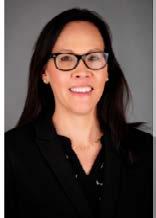

Matt May Secretary/Treasurer Rosenblum & Reisman

Adam Johnson Past President Nahon, Saharovich & Trotz
Preston Battle
Audrey Calkins
Hallie Flanagan
Malcolm Futhey III
Jack Heflin
Geoffrey Lewis
Joseph McKinney
Hon. Danielle Mitchell
The Memphis Lawyer is a quarterly publication of the Memphis Bar Association, Inc. with a circulation of 2,000. If you are interested in submitting an article for publication or advertising in an upcoming issue, contact info@memphisbar.org. The MBA reserves the right to reject any advertisement or article submitted for publication.
Jerrick Murrell
Ruchee Patel
Danielle Rassoul




Maggie Roney
Abigail Webb Sala
Maggie Stringer
Quinton Thompson
Councilwoman Janika White
Kristina Woo
Section Representatives
Anne Davis
Dan Norwood
Joe Ozment
Toni Parker


AWA Representative Misty O'Neal

Law School Representative
Regina Hillman
NBA Representative
Jackie Richardson
YLD President
Brande Boyd


BY LAURAN STIMAC, MBA 2025 PRESIDENT
As the summer ends and school resumes, Memphis Bar Association volunteers and staff are hard at work finalizing plans for one of the MBA’s biggest months. We will kick off October with our Bench Bar Conference on October 3-6, 2025. Then we will celebrate Pro Bono Month, recognized nationwide as a time to honor the lawyers’ work in our community to increase meaningful access to justice and their commitment to the pro bono work on which many in our city and county depend for legal services. In recognition of Pro Bono Month, I want to highlight some of the partnerships through which MBA members provide pro bono legal services and encourage you to find the one that works for you.
The MBA Access to Justice Committee coordinates quarterly clinics focusing on pressing issues in our community, from renter’s rights to expungement and estate planning, with the help of several community partners with acronyms every Memphis lawyer should know: MALS, CLC, and WTLS.
First, Memphis Area Legal Services (MALS), a longtime partner of the MBA with a deep history in the Memphis legal community, provides our members with regular pro bono opportunities on the second Saturday of each month at the Benjamin L. Hooks Central Library. Another opportunity is the Courthouse Legal Advice Clinic, held on the first and third Thursday of each month at the Judge D’Army Bailey Courthouse. At these clinics, lawyers of all experience levels and practice areas can learn and assist community members.
Second, the Community Legal Center (CLC) Civil Program provides access to civil legal counsel for Shelby County residents. CLC charges its clients fees on a sliding scale according to household income and family size, as long as they have an income between approximately 125% and 300% of the federal poverty level as defined by the U.S. Department of Health and Human Services. CLC also operates a Pro Se Parents Clinic each morning at Judge D’Army Bailey Courthouse
to assist self-represented litigants with divorces or help parents with minor children obtain visitation rights, also with a sliding-scale fee. Through its Elder Law Program, CLC engages in outreach to lower income elders about advance directives and preparation of wills through its staff attorneys and the upcoming Estate Planning Clinic, scheduled for October 11, 2025. CLC also provides immigration law services to qualifying clients.
Finally, West Tennessee Legal Services (WTLS) is newest on the scene here in Memphis, bringing lowerincome clients legal support for issues involving debt collection, repossession, credit counseling, garnishment, student loans, warranties, benefits from various government entities, fair housing, and support for domestic violence victims. The leaders and attorneys of WTLS bring additional resources and services to our community to complement those provided by MALS and CLC.
While the Rules of Professional Conduct do not technically require pro bono service, Rule 6.1 does encourage us to “aspire to render at least 50 hours of pro bono public legal services per year,” and “voluntarily contribute financial support to organizations that provide legal services to persons of limited means.” Our Memphis community has no shortage of need for those services and support, and MALS, CLC, and WTLS need our help to meet that need. All three organizations offer longer-term pro bono engagements to volunteer attorneys who are interested in taking on more in-depth representation. Visit the MBA volunteer opportunities page here to get started.
If you’re still unsure how you can best dedicate your pro bono hours, rest assured—we can help with that! Join us for a seminar including representatives from MALS, CLC, and WTLS on October 14, 2025, where they will share more about what they do and how you can get involved.

BRENNAE L. BROOKS, ESQ.
“The men and women in these cases protected this country and the freedoms we hold dear; they were disabled in the service of their country; the least we can do is properly resolve their disability claims so that they have the food and shelter necessary for survival. It takes on average six and a half years for a veteran to challenge a VBA determination and get a decision on remand. God help this nation if it took that long for these brave men and women to answer the call to serve and protect. We owe them more.” 1
The United States Department of Veterans Affairs (VA), formerly titled the Veterans Administration, was formed in 1930. The VA now consists of three component agencies: the Veterans Health Administration (VHA), the National Cemetery Administration (NCA), and the Veterans Benefits Administration (VBA).2 The VBA handles veterans’ disability cases.
The VBA’s origin dates back to the American Revolution, when the Continental Congress passed the first national pension laws for wounded or injured soldiers.3 By the mid-1830s, the Bureau of Pensions dispensed payments annually to about 40,000 veterans, widows, and dependent children.4 In 1849, the Pension Bureau transferred to the Department of the Interior, where it remained until 1930 when the VA was created.5 The VA’s mission statement is “[t]o fulfill President Lincoln’s promise to care for those who have served in our nation’s military and for their families, caregivers, and survivors.”6
After the VA was created, when a veteran sought initial benefits from a VA Regional Office (RO) and received a denial, the veteran could appeal to the Board of Veterans’ Appeals (BVA), and the BVA provided the final decision on the claim.
For decades, the VA had “splendid isolation” as the only federal administrative agency whose major functions were insulated from judicial review, and the House Committee of Veterans’ Affairs resisted the efforts

of veterans and their advocates to alter that isolation.7
Despite their efforts, on November 18, 1988, Congress created the U.S. Court of Appeals for Veterans Claims through the Veterans’ Judicial Review Act of 1988 because of the influx of veterans’ post-Vietnam claims.8
In essence, from the Revolutionary War in the 1770s to the establishment of the U.S. Court of Appeals for Veterans Claims in 1988, veterans who were denied VA benefits had no judicial recourse to challenge their denials. The lack of judicial oversight may have resulted in systemic issues within the VA’s claims system, which caused decades of wrongful denials due to the constant disconnection between veterans, examiners, and RO that initially handled claims. I hope this article will give you some insight into the complexities of veterans-disability law and encourage you to get involved.
To be eligible for VA benefits, a claimant must meet the statutory definition of “veteran,” which means a person who served in the active military, naval, air, or space service and who was discharged or released therefrom under conditions other than dishonorable.9
VBA benefits include compensation or pension from the VA, but veterans cannot receive both.10 Pension benefits are for veterans who served during wartime and are based on financial need.11 Disability compensation is for veterans with service-connected disabilities who served during wartime, peacetime, or both, and eligibility is based on the type and severity of disability rather
than financial need.12 If a veteran applies and is eligible for both, the VA pays whichever benefit is the greater amount.13
Veterans have five methods to establish service connection: (1) direct service connection, (2) service connection through aggravation, (3) secondary service connection, (4) presumptive service connection, and (5) service connection for a disability caused by VA medical care or vocational rehabilitation.
First, direct service connection may be granted with evidence of a current disability, in-service incurrence or aggravation of a disease or injury, and a nexus between the claimed in-service disease or injury and the present disease or injury.14
Second, regarding service connection through aggravation, VA regulations assume a presumption of soundness: that every veteran was in sound condition when they were examined, accepted, and enrolled for service—except for the defects, infirmities, or disorders noted at the time of the examination, acceptance, and enrollment (or where clear and unmistakable evidence demonstrates that the injury or disease existed before acceptance and enrollment and was not aggravated by such service).15 This presumption attaches only if an induction examination did not note the later-complainedof disability. Therefore, if evidence shows that a disorder manifested or was incurred in service, and this disorder is not noted on the veteran’s entrance examination report, the presumption of soundness shields the veteran from any finding that the unnoted disease or injury preexisted service.16
Service connection may be granted for a disability resulting from disease or injury incurred in or aggravated by service.17 Service connection may also be granted for any disease diagnosed after discharge if all the evidence, including evidence pertinent to service, establishes that the veteran incurred the disease while in service.18
Third, veterans can establish service connection on a secondary basis for a disability proximately caused by or the result of service-connected disease or injury.19 The evidence must show (1) that a current disability exists and (2) that the current disability was either (a) proximately caused by or (b) proximately aggravated by a serviceconnected disability.20
Fourth, regarding presumptive service connection based on a chronic disease, if a veteran served for at
least 90 days during a period of war or after December 31, 1946, and manifests certain chronic diseases (like arthritis, tinnitus, or rhinitis) to a degree of 10 percent within one year from the date of termination of such service, the VA will presume that the veteran incurred or aggravated the disease in service despite the lack of evidence of such disease during the period of service.21
Alternatively, when a disease in 38 C.F.R. § 3.309(a) is chronic during service or the one-year presumptive period, veterans can also establish service connection by showing continuity of symptomatology after service.22
But using continuity of symptoms to establish service connection is limited only to those diseases listed in 38 C.F.R. § 3.309(a), and veterans cannot use continuity of symptomatology for other chronic disabilities.23
The VA’s system of claims adjudication is supposed to be non-adversarial, which means that the VA works with veterans to develop and substantiate their claim for benefits instead of working against veterans to disprove their claims. When there is an approximate balance of positive and negative evidence, the VA should give the benefit of the doubt to the veteran.” 24 (See n. 37 on “benefit of the doubt” doctrine.)
In November 2000, Congress passed the Veterans Claims Assistance Act (VCAA), which requires the VA to make reasonable efforts to assist veterans in obtaining evidence and information necessary to prove a claim, such as providing a medical examination or obtaining a medical opinion.25
A medical examination or medical opinion is necessary when there is (1) competent evidence of a current disability or persistent or recurrent symptoms of a disability, (2) evidence establishing that an event, injury, or disease occurred in service or establishing certain diseases manifesting during an applicable presumptive period for which the claimant qualifies, and (3) an indication that the disability or persistent or recurrent symptoms of a disability may be associated with the veteran’s service or with another service-connected disability, but (4) insufficient competent medical evidence on file for the VA to make a decision on the claim.26 These factors are called the McLendon factors. The threshold for finding a link between a current disability and service to require medical examination is low.27 Furthermore, once the VA undertakes to provide a VA examination or obtain a VA opinion, it must ensure that the examination or opinion

This case study shows how all but the fifth type of service connection can play out with one client. I have called him “John” to protect his identity.
John was drafted into the U.S. Army in August 1967. He served in Vietnam from January 1968 to January 1969. He was awarded the Bronze Star Medal with the “V” device29 for his heroism in connection with his military actions involving conflict with an armed hostile force from May 9, 1968, to May 15, 1968. His medal citation states that he made repeated trips to resupply his fellow soldiers’ guns even though his ammunition-laden vehicle was a clear target for enemy fire. His courageous actions in the face of enemy fire kept the guns supplied with sufficient ammunition to repel the enemy. After his service in Vietnam, he discharged from the military in August 1969. He suffers from several disabilities, but this case study will focus on John’s back disability.
John reported that he injured his back while handling ammunition when he was assigned to the artillery infantry division. His back condition worsened after he hauled ammunition under fire for a week (the assault that earned him the Bronze Star). He entered service with no back condition, and his back condition started in service and has continued since his discharge.
John’s service medical records (SMRs) reflect that, on his 1967 entrance examination, he had a normal clinical spine evaluation, and the SMRs noted no defects or diagnoses for his spine. In late January 1968, he reported pain in his right thoracic (upper back) area while he was lifting, and medical staff told him that he should not lift for two days. John also reported recurrent back pain at his June 1969 separation examination, and the separation examiner wrote incorrectly that John told him that he had episodic low back pain since an accident in 1964 that predated his service.
John’s medical treatment records from January 1973 through August 1979 show that John continued to seek treatment for chronic recurrent low back strain syndrome. Moreover, during a clinic visit in January 1997, John reported back problems that started in the 1970s. A neurosurgeon told him that he had a pinched nerve in his back. John reported a three-month history of pain and stiffness in the lower back that radiated to
his left leg. He was diagnosed with a low back strain manifested by a mild muscle spasm on both paralumbar muscles.
When John filed his original VA disability claim for his back in February 1997, the RO obtained private treatment records and medical records from the VA, which showed his reports of back problems in the 1970s. But the VA did not obtain his SMRs or Military Personnel Records (MPRs). In September 1997, the RO issued a decision for a different disability but did not address John’s back disability. Therefore, John’s back claim remained pending.
John filed another claim for his back in September 2001 and stated that his injury occurred while he was handling ammunition in the artillery infantry division and that he had received the Bronze Star because of his actions. Although over 30 years had passed since he received the Bronze Star, John still experienced intrusive memories, especially during the anniversary month of May.
In a May 2002 decision, the RO referenced John’s SMRs and his separation examiner’s incorrect statement that John’s episodic low back pain predated his service. The RO denied service connection because the back condition preexisted service and John had no evidence that the condition permanently worsened because of his service.
John’s back pain continued to worsen over the years, and medical records show that in July 2003, December 2003, and December 2004, he complained of lower back pain. His October 2004 X-ray of his lumbosacral spine revealed significant degenerative disc disease, posterior osteophyte at the L5-S1 level, and osteophytes at the L2L3 level.
John fought through the anniversary effects related to Vietnam and filed another claim for his back in May 2005 and once again reported that his back injury was due to hauling ammunition under fire, for which he had received the Bronze Star. He also submitted a statement in October 2005 explaining that he entered service with no back condition and that his back condition started in service and had continued since his discharge. Therefore, he claimed that his back disability was directly related to service, and it did not preexist his service.
In a November 2005 rating decision, the RO denied John’s claim for service connection for his lower back problems once again. Regarding the first element of service connection, the RO stated that there was no





evidence of a current back diagnosis even though John was diagnosed with degenerative disc disease in October 2004. Regarding the second element, the RO stated that there was no in-service incurrence or aggravation of a back injury even though John reported recurrent back pain at his separation examination and he was a combat veteran. The remaining element of service connection requires a medical nexus, but the RO did not reach that element because it erroneously concluded that John did not meet the first two elements of service connection. Thus, the RO misapplied all three elements of direct service connection, disregarded the positive evidence and John’s statement, and gave more weight to evidence that did not exist.
After the November 2005 rating decision, John did not submit another claim for his back even though his condition continued to worsen over the next two decades. I submitted another claim for John’s back disability in April 2024, which I will discuss below.
Because John engaged in combat during his military service, 38 U.S.C. § 1154(b)—the combat presumption— applies to his claim. Under § 1154(b), because he engaged in combat, his lay evidence that he developed low back pain from his combat actions is sufficient proof of service connection as long as it is consistent with the circumstances, conditions, or hardships of his service. To that end, the VA should resolve every reasonable doubt in his favor.30 The Federal Circuit has held that § 1154(b)’s presumption applies to both the potential cause of a disability and whether the veteran incurred the disability itself in service.31 The combat presumption, however, does not substitute for medical-nexus evidence; rather, it reduces John’s evidentiary burden with respect to the second element of service connection, which is evidence of an incurrence or aggravation of an injury or disease in service.32
When I submitted John’s 2024 claim, I included evidence of a positive nexus linking John’s back disability directly to his combat military service under § 1154(b). I also argued that John met the McLendon factors for an examination of his back pain, meaning that the VA must provide a medical examination based on the VA’s duty to assist under 38 U.S.C. § 5103A.
The VA gave John an examination with a VA contractor33 in May 2024. The examiner noted that John’s
back disability began in June 1969 while in service, but she also referenced the incorrect note from his military separation examination report that he had back pain since 1964. She did not consider his lay statements in his records. She also incorrectly said that his condition “stayed the same” since the onset date in the 1960s despite listing several of John’s back diagnoses since his separation from service.34 On September 5, 2024, the VA denied service connection for John’s back disability, and the decision relied on the incorrect evidence the examiner noted during her examination. The RO also refused to obtain a medical opinion about John’s condition because of the erroneous evidence.
In a September 11, 2024, statement, I argued that the RO cannot conclude that the evidence clearly and unmistakably showed that John’s back disability preexisted service because his spine was normal when he entered service in 1967. The Army had presumed John to be of sound condition when he joined the Army. Thus, to rebut the presumption of soundness, the VA must show by clear and unmistakable evidence both that John’s currently diagnosed back disability existed before service and was not aggravated by service.35 Because a veteran’s lay statements about a pre-existing condition alone do not rebut the presumption of soundness, the VA could not rebut the presumption of soundness that the Army’s normal spine note gave him.36
On September 21, 2024, the RO finally acknowledged that John was in sound condition with no pre-existing back injury before his active-duty service under the presumption of soundness. The RO also conceded that John had engaged in combat (as it had to because of his Bronze Star with “V” device). The remaining question was whether John’s back disability related to his military service, so in October 2024, the VA gave John another VA contract examination with a different examiner. The examiner diagnosed John with degenerative arthritis of lumbar spine, degenerative disc disease, and bilateral lower extremity lumbar radiculopathy.
The examiner concluded that John’s back disability was at least as likely as not37 incurred in or caused by John’s combat participation. The examiner took John’s subjective history into account and further explained that John’s medical records after his service discharge listed low back pain with radiculopathy as an active diagnosis. The examiner also stated that John’s subjective history was consistent with the examination findings and repetitive lifting injuries while performing his combat-zone duties.38



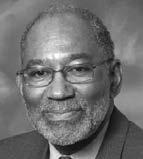
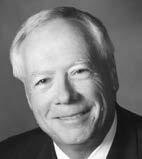



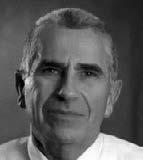

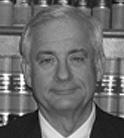


In a February 2025 rating decision—18 years after he first submitted his request for service connection— the RO finally granted John’s request and found that his lumbar degenerative arthritis with degenerative disc disease was directly related to his military service.39 The RO also granted John service connection for his left and right lower extremity lumbar radiculopathy as a secondary service-connected disability of lumbar degenerative arthritis with degenerative disc disease. The effective date of the grant was backdated to April 2024, the date the VA received his most recent claim.40
While John and I are pleased that the VA finally granted service connection for his back and other disabilities, John should have an earlier effective date of February 1997, when he originally filed his claim. We are going to appeal his case to the Board of Veterans’
1 United States Circuit Judge Kimberly Moore (now Chief Judge) of the United States Court of Appeals for the Federal Circuit wrote this in her concurring opinion in Martin v. O’Rourke, 891 F.3d 1338, 1352 (Fed. Cir. 2018).
2 VA History, DEP’T OF VETERANS AFFAIRS, https://department. va.gov/history/history-overview (last visited August 5, 2025).
3 Id.
4 Id.
5 Id.
6 New VA Mission Statement recognizes sacred commitment to all Veterans, their families, caregivers and survivors, VA NEWS, https:// news.va.gov/press-room/new-va-mission-statement-recognizes-sacredcommitment-to-all-veterans-their-families-caregivers-and-survivors/ (last visited August 25, 2025).
7 History, UNITED STATES COURT OF APPEALS FOR VETERANS CLAIMS, http://www.uscourts.cavc.gov/history.php (last visited August 5, 2025).
8 Id.
9 38 U.S.C. § 101(2). VA benefits may be granted even though the discharge would normally be considered to be under dishonorable conditions if it is established that, at the time of the offense leading to the discharge, the veteran was insane. 38 U.S.C. § 5303(b). The VA defines the “insanity exception” in 38 C.F.R. § 3.354.
10 How are pension benefits and disability compensation different?, DEP’T OF VETERANS AFFAIRS, https://www.va.gov/resources/howare-pension-benefits-and-disability-compensation-different (last visited August 5, 2025).
11 Id.
12 Id.
13 Id.
14 Id.; see also Caluza v. Brown, 7 Vet. App. 498, 506 (1995), aff’d, 78 F.3d 604 (Fed. Cir. 1996).
15 38 U.S.C. § 1111; 38 C.F.R. § 3.304(b).
16 See Gilbert v. Shinseki, 26 Vet. App. 48 (2012); Bagby v. Derwinski, 1 Vet. App. 225, 227 (1991); 38 C.F.R. § 3.304(b). The VA can rebut the presumption of soundness only if the evidence clearly and unmistakably shows that the veteran’s disability (1) existed before
Appeals. The disconnect among John, the examiner, and the RO trapped John in an adversarial system where he fought for benefits that he was entitled to receive. John was injured during his Vietnam service and received the Bronze Star, but he did not get the benefit of the doubt for his back injury until 28 years after he initially filed a claim for his back. This delay and a supposedly nonadversarial system functioning as adversarial are examples of how the service-connection process can contravene the VA’s mission of caring for those who served.
If you think that establishing service connection is complex, wait until you read about earlier effective date claims. I would love to discuss my strategy for establishing an earlier effective date based on 38 C.F.R. 3.156(c)41 or clear and unmistakable errors (CUEs)42 in the 2001 and 2005 decisions, but I will save that for another time.
acceptance and enrollment into service—the “preexistence prong”— and (2) was not aggravated by service—“the aggravation prong.” See Wagner v. Principi, 370 F.3d 1089, 1096 (Fed. Cir. 2004); Bagby, 1 Vet. App. at 227; see Horn v. Shinseki, 25 Vet. App. 231, 234 (2012). To satisfy the aggravation prong, the government must show by clear and unmistakable evidence either that there was no increase in disability during service or that any increase in disability was “due to the natural progression” of the condition. See Joyce v. Nicholson, 443 F.3d 845, 847 (Fed. Cir. 2006); 38 U.S.C. § 1153; 38 C.F.R. § 3.306.
17 38 C.F.R. § 3.303(a).
18 38 C.F.R. § 3.303(d).
19 38 C.F.R. § 3.310.
20 See Allen v. Brown, 7 Vet. App. 439, 448 (1995) (en banc).
21 38 U.S.C. §§ 1101, 1112, 1137; 38 C.F.R. §§ 3.307, 3.309.
22 38 C.F.R. § 3.303(b).
23 See Walker v. Shinseki, 708 F.3d 1331 (Fed. Cir. 2013).
24 38 U.S.C. § 5107 (b); 38 C.F.R. § 3.102; see Lynch v. McDonough, 21 F.4th 776, 781-82 (Fed. Cir. 2021).
25 Veterans Claims Assistance Act of 2000, Pub. L. No. 106-475, 114 Stat. 2096.
26 38 U.S.C. § 5103A (d)(2); 38 C.F.R. § 3.159(c)(4)(i). See also McLendon v. Nicholson, 20 Vet. App. 79, 81-86 (2006).
27 Locklear v. Nicholson, 20 Vet. App. 410 (2006).
28 See Barr v. Nicholson, 21 Vet. App. 303, 312 (2007).
29 A “V” device (also known as the Combat V or Valor device) is a distinction awarded to the Bronze Star Medal, signifying that the soldier earned the medal for acts of heroism or valor during combat. It is a small brass “V” attached to the ribbon of the Bronze Star.
30 38 U.S.C. § 1154(b).
31 See Reeves v. Shinseki, 682 F.3d 988, 999 (Fed. Cir. 2012).
32 See generally Clyburn v. West, 12 Vet. App. 296, 303 (1999).
33 The VA has increasingly relied on contractors to perform disability exams. The VA estimates that the percent of disability exams conducted by contractors increased from 55% in fiscal year 2018 to 93% in fiscal year 2024. In 2016, VBA established the Medical Disability Examination Office (MDEO) to manage and oversee these contractors. See VA DISABILITY EXAMS Improvements Needed to Strengthen

Oversight of Contractors’ Corrective Actions, available at https:// www.gao.gov/assets/gao-24-107730.pdf. GAO-24-107730, VA
DISABILITY EXAMS: Improvements Needed to Strengthen Oversight of Contractors’ Corrective Actions, United States Government Accountability Office (Sept. 2024), available at https://www.gao.gov/ assets/gao-24-107730.pdf.
34 This particular examiner makes this error often in her examination reports, which results in wrongful denials and reductions.
35 38 U.S.C. § 1111; 38 C.F.R. §§ 3.304, 3.306.
36 See Paulson v. Brown, 7 Vet. App. 466, 470 (1995); Crowe v. Brown, 7 Vet. App. 238 (1994).
37 The “at least as likely as not” is the standard that the VA uses, which is considered its “benefit of the doubt” doctrine. This specific language should be included in medical opinions. According to 38 U.S.C. § 5107(b), when there is an approximate balance of positive and negative evidence regarding any issue material to the determination of a matter, the VA shall give the benefit of the doubt to the claimant.
38 See Nieves-Rodriguez v. Peake, 22 Vet. App. 295 (2008) (stating that it is the factually accurate, fully articulated, sound reasoning for the conclusion that contributes to the probative value of a medical opinion).
39 The Veteran also met the requirements of service connection for his back disability as presumptively related to service. In this regard, as stated above, if a veteran served for at least 90 days during a period of war or after December 31, 1946, and manifests certain chronic diseases, such as arthritis, to a degree of 10 percent within one year, from the date of termination of such service, such disease shall be presumed to have been incurred or aggravated in service, even though there is no evidence of such disease during the period of service. 38 U.S.C. §§ 1101, 1112; 38 C.F.R. §§ 3.307, 3.309. Alternatively, when a disease in 38 C.F.R. § 3.309(a) is not shown

to be chronic during service or the one-year presumptive period, veterans may also establish service connection by showing continuity of symptomatology after service. See 38 C.F.R. § 3.303(b). The Veteran met such requirements even though he was not diagnosed with the chronic disease within one year of his service separation because he had back complaints in service, he continued to have back problems, and he was ultimately diagnosed with degenerative joint disease (arthritis) of the back, which is a chronic disease.
40 Generally, the effective date of an award of disability compensation based on an original claim shall be the date of receipt of the claim or the date entitlement arose, whichever is later. 38 U.S.C. § 5110(a); 38 C.F.R. § 3.400.
41 A veteran could receive an earlier effective date if the VA denied his or her original claim for service connection and then later obtained service records in a subsequent claim that substantiated the veteran’s original claim.
42 A three-pronged test determines whether CUE is present in a prior determination: (1) “[e]ither the correct facts, as they were known at the time, were not before the adjudicator (i.e., more than a simple disagreement as to how the facts were weighed or evaluated) or the statutory or regulatory provisions extant at the time were incorrectly applied;” (2) the error must be “undebatable” and of the sort “which, had it not been made, would have manifestly changed the outcome at the time it was made;” and (3) a determination that there was CUE must be based on the record and law that existed at the time of the prior adjudication in question. See Damrel v. Brown, 6 Vet. App. 242, 245 (1994) (quoting Russell v. Principi, 3 Vet. App. 310, 313-14 (1992) (en banc)).
Brennae Brooks is originally from Memphis, and she is a veteran who served in the U.S. Air Force for 8 years, including deployments to Kyrgyzstan, Kuwait, and Afghanistan. While in service, she earned her undergraduate degree from Wayland Baptist University in 2009. After her service, she graduated from The Thurgood Marshall School of Law, Texas Southern University in 2014.
From 2017 to 2022, Brennae worked at the VA’s Board of Veterans’ Appeals (“Board”) in Washington, D.C., where she conducted extensive research in order to write a high volume of appellate decisions. She consulted on laws and regulations pertaining to veterans benefits; decisions of the U.S. Court of Appeals for Veterans Claims, the U.S. Court of Appeals for the Federal Circuit, and the U.S. Supreme Court; and the decisions of the VA general counsel. She earned several awards for her writing during her five years at the Board.
In 2022, Brennae resigned from the Board and started her own practice in Memphis, which focuses exclusively on federal veterans’ benefits law matters in all 50 states. She is a VA Accredited Attorney and is also admitted to practice in the U.S. Court of Appeals for Veterans Claims, the U.S. Court of Appeals for the Federal Circuit, and the U.S. Supreme Court.

BY ATTORNEY KENNETH W. BRASHIER
Iwant to begin by offering my heartfelt congratulations to Judge Christian Johnson on his recent appointment as the Presiding Judge of the Shelby County Veterans Court. This position is both vital and noble, and Judge Johnson’s personal and professional journey makes him uniquely suited to carry forward the mission of this remarkable court. His deep commitment to veterans, rooted in his own service as a U.S. Marine, adds a powerful layer of authenticity to the role.
It was an honor to sit down with Judge Johnson and discuss not only his path to the bench but also the values, life experiences, and vision that now shape his leadership of one of Tennessee’s most impactful treatment courts.
1. On March 1, 2025, you became the presiding judge over Shelby County Veterans Court. First of all, what is Veterans Court?
Shelby County Veterans Court is a treatment court for veterans who have been arrested and have pending legal cases. The only qualifier to enter the program is that the individual defendant must have served in the military. Once the defendant agrees to enter the program and spend a minimum of one year in it, my staff determines a treatment plan tailored to the individual. Some individuals have alcohol or substance abuse issues, some have PTSD to deal with, some have mental-health issues, and some have anger-management issues. Their treatment plan is tailored to fit their needs, and sometimes those needs change during their treatment.
Beyond their treatment needs, we house homeless veterans while they get themselves back on their feet. Our goal is to take veterans who may have fallen to their lowest point and restore them to be the individuals they once were who proudly served their country.
There are a few ways defendants enter Veterans Court. There could be an agreement that their case gets dismissed upon successful completion of the program. It

may be part of their bond conditions that they participate in the program to stay out of jail while their criminal case is pending. Lastly, it may be part of their probation or diversion terms to successfully complete the program.
2. How long have you wanted to be the presiding judge for Veterans Court?
I first heard of Veterans Court when I became a licensed attorney in 2013. At that time, it was still in its infancy and looked nothing like the successful, number one treatment court in the State of Tennessee that it is today. As a veteran, I volunteered to be a mentor at that early stage, but unfortunately, I was never used in that role. At this point in my career, I never thought about taking the court over. Over the course of nearly 13 years, Judge Anderson built Veterans Court from the ground up.
When I was deciding to run for judge in the 2022 election, I heard rumors that Judge Anderson might not run again. I knew at that point, as a veteran, as a Marine, that this was where I belonged. It was not to be. Judge Anderson ran for reelection at the time, and I had no plans to unseat the judge who founded the court I admired the most. After winning my own election, I thought my dream had died. I thought there was no way I would ever achieve my dream of taking over Veterans Court.
3. How did you become the judge of Veterans Court?
I practiced in front of Judge Anderson as a defense attorney, and he knew I was a Marine and respected me as such. Funny side story: I was in his courtroom one day as a defense attorney standing at the front row, just behind the swinging wooden doors, holding my cowboy hat and my leather notebook binder when all of a sudden, an in-custody defendant jumped the railing and ran towards the exit. Judge Anderson yelled, “Stop him!” Well, sometimes I overthink things, so as this is happening in real time my brain slows it down and
I’m wondering first of all as a defense attorney, should I even get involved; second, my hands are full and I’m not risking my hat. I ended up giving the guy a hip check but he bounces off the benches and gets tackled at the back of the court by deputies.
All that to say that Judge Anderson knew that I had served in the Marine Corps and that I had become a Marine before becoming a judge and a colleague of his. Eventually, when he decided he was retiring, he approached me and asked me if I was interested in taking over Veterans Court. Excited? Are you kidding me? This had been my ultimate goal and now it was becoming a reality? Absolutely! I cautiously accepted, not wanting him to retract that offer. So I began my training and shut down my court early one Wednesday a month so that I could go observe Veterans Court. I’ll talk about it more later in this article, but I don’t take charge of things that I’m not prepared to handle. I prepared myself, and people asked me what that was like.
What was it like being handed the keys to the job of my dreams? Even if you’re not a car person (which I am and why I’m making this analogy), imagine your father buying a 1968 Corvette and spending 13 years to rebuild and restore it, and after all that work was put in, he hands you the keys to that beautiful machine. That’s how I feel about Veterans Court. I was handed the keys to a smooth-running machine. The staff who are committed to the work and dedicated to helping the veterans in the program are amazing. I was handed the keys to take over with the approval of my fellow judges. There is no extra pay, just extra stress and duties—and for me they are worth it.
1. Let’s start at the beginning — where did you grow up, and what was your childhood like?
For most people this is a very simple question and usually the answer is, “I was born and raised in . . . .” But like most of my background, my answer is a little more complicated. I was born at Camp Lejeune, North Carolina. My dad (Richard Johnson) was on active duty in the United States Marine Corps, and he, my mom, and my older sister Pam lived in base housing at the time. My dad was on a Navy ship during an exercise while I was being born. He didn’t know I had been born until the American Red Cross notified him six days later. I was diagnosed with “failure to thrive” due to me losing
weight as an infant. It turns out that I am a victim of the Camp Lejeune toxic water situation.
From Camp Lejeune, my dad received orders to transfer to Twentynine Palms, California, where we stayed until I was four years old. During that time, my dad left my mom, sister, and me—which forced her to get a job as a park ranger at Joshua Tree National Monument. The Marine Corps has a saying: If the Marine Corps wanted you to have a wife, they would have issued you one. My mom fell in love with my father (Richard Mumm) during that hard time. My father (just to be clear, Richard Mumm) decided to get out of the Marine Corps and accept a civilian job with EDS running war games at Camp Lejeune. In 1978, we left California and moved back to Camp Lejeune (this time off base in the city of Jacksonville), and my mom got remarried.
My two younger brothers, David and Matthew, were born in Jacksonville, and we lived there until the middle of my fifth grade year. Pam was already in high school. The program that my father was attached to, TWASEAS, was coming to an end, and in 1985 he found a job within the company in Camp Hill, Pennsylvania. Moving to Camp Hill was awful because I was the new kid entering a class of 65 students. I ended up being bullied at school there, but I did make a few friends, and Camp Hill was an amazing township to grow up in.
Everyone walked to school, so we rarely had snow days. Camp Hill had a public pool where I took swimming lessons and hung out during the summer. It offered free tennis lessons which I took and dedicated myself to, which led me to playing for my high school team. I joined the Boy Scouts at age 15 and made it to the rank of Life Scout while still in Camp Hill. I also joined the Camp Hill Fire Department as a junior volunteer firefighter. I was issued my own gear and got to go on fire calls and assist the other volunteers while receiving training as a firefighter. The amazing thing about living there was we could travel to historic places in a few hours, whether it was a class trip with school or a family trip. I toured Gettysburg, Washington D.C. multiple times, and took trips to Maryland, Connecticut, and New Jersey. In December 1990, the middle of my junior year of high school, my father learned that his company was transferring him to Plano, Texas.
The only thing that excited me about moving to Texas was the fact that I got to buy some cowboy boots and a cowboy hat. I’ve been wearing them ever since! (When I was a toddler, I would watch Gunsmoke every day and

get dressed up in my boots, hat, and chaps to watch it. That ended in 1978 when we stopped having a tv in the house. We lived without a tv until I was in eighth grade.)
I went from a graduating class of 65 in Camp Hill to Plano East Senior High, where my graduating class was 855 students. My high school looked like a college campus, and it only hosted juniors and seniors. I was 6’2”, 144 pounds, and the new kid in an overwhelming atmosphere. Once again, I was picked on and bullied in school, but I was used to that already. My focus was on activities outside of school. I joined a Boy Scout troop and made it to Eagle Scout. I joined the Police Explorer program and did ride-alongs with the Plano Police Department. That certainly didn’t help at school when my ride-alongs responded to calls with parties involving underage drinking.
As to the second part of your question, “what was your childhood like,” I think I’ve explained a lot while answering the first part, but I would like to add a few thoughts. Every meme, reel, or short video about being raised in the 80s and 90s applies to me. In North Carolina, I played soccer every season. I played all day outside with friends on the block and stayed outside until my parents turned on the porch light. We rode bikes, jumped ramps, played soccer, explored the woods and built forts, played fumble rumble, drank from the hose when thirsty, had BB-gun wars, and ate dinner every night as a family.
In Pennsylvania, at the age of 12, I got my first job delivering newspapers. Every evening during the week and the mornings on the weekend. I had to go around and collect the money as well. I quit that job when I turned 16 and worked at Little Caesars until we moved to Texas. I went camping with the Boy Scouts every month, hung out at the fire station, and wandered the neighborhood. Tennis lessons each summer cost a can of tennis balls, and my family paid the fee to the community pool. Everything was within walking distance, so my Specialized mountain bike gave my friends and me an advantage. I spent my summers playing tennis most of the day, hanging out at the pool and buying snacks, and at night playing capture the flag in the park. Because the whole township walked to school, we rarely had a snow day, despite snow being on the ground most of the winter. We all went sledding in the park on the weekends and had snowball fights with friends and strangers. At night after dinner, my entire family would listen to my father read us a chapter from a book, and then we would
settle in and read our own books. The biggest trouble I got in during this time was being caught after lights out reading under my covers with a flashlight.
My parents were strict Christians, which meant no secular music, no TV, and no celebrations of holidays such as Halloween. I fell in love with classic rock after I joined the Marine Corps. Boston is still my favorite band, and I’m lucky to have seen them four times. Rush is my second favorite, and I’m lucky to have seen them three times (especially because they will never tour again). Halloween still belongs to the Devil.
In Texas I got a job at Albertsons as a bagger and a cashier, joined the Police Explorers, and finished my journey to becoming an Eagle Scout. Camping in a cow pasture certainly wasn’t as beautiful as camping near a mountain stream off the Appalachian trail in Pennsylvania. I made a few friends from where I worked and from Scouts, but school wasn’t fun—that’s probably why I didn’t do very well in school despite my capability. Except for my experiences at school after leaving North Carolina, I had an amazing, privileged childhood.
2. What early values or lessons from your family or community shaped who you are today?
You’d have to read my biography to fully understand that. In short, everything that I’ve experienced—the love and installation of morals from my family, and my recognition of the needs of our communities through my life experiences and education—shaped who I am today.
3. Did you always envision a career in law or public service growing up?
Yes. But not in the way you might imagine. As I said earlier, I was a junior firefighter in Camp Hill and a police explorer in Texas. Firefighter or police officer were the choices that I thought I had. I chose to be a firefighter and put myself through the fire academy at Collin County Community College in the 90s, and after graduating as a certified EMT/Firefighter, I tried out and got hired in Grand Prairie. I loved my job as a firefighter. Few people have had the experience of being in a house entirely engulfed in flames—I have, and I enjoyed it. I also knew as a teenager, because of my dad and father, and because of where I was born, that I would one day join the Marine Corps. How could I not?


Doni Mills | Account Executive
Email: dmills@veritext.com
Direct: (901) 521-3864
Cell: (662) 689-1102
EXHIBIT CAPTURE
See your testimony in action. Capture compelling content by displaying electronic documents to a witness and recording computer interaction in realtime.
EXHIBIT SHARE
Introduce and share electronic exhibits with all local and remote participants through the use of your laptop or iPad. No need to print and ship multiple copies of documents.
ACE “ADVANCED
Ongoing hyperlinked and searchable PDF exhibit list updated after each deposition. No Wi-Fi necessary.
VERITEXT VIRTUAL
Depose witnesses remotely and share exhibits in realtime with many participants. Easily connect with any webcam-equipped device, speakerphone and the internet.
VIDEO TECHNOLOGIES
Employ broadcast-quality legal videography, videostreaming, video synchronization and videoconferencing to enhance testimony.
MYVERITEXT.COM
Schedule depositions and access transcripts and exhibits online from anywhere, anytime for free.

1. What kinds of jobs did you have before college? Any that stand out or taught you something lasting?
I didn’t dedicate myself to going to college until I was 29 years old. So yes, I had many jobs before, during, and after college. They all stand out, and they all taught me something. My first job was handling a paper route at age 12. It taught me to be committed to work. No matter what I had going on in life, I knew I had to deliver the evening paper at the same time every night.
My second job was at Little Caesars at the age of 16. I made pizza, worked as a cashier, ran the oven, and prepared to-go orders. I learned how to balance school and work from this job.
My third job came a few weeks later after we moved to Texas, and I became a bagger and cashier at Albertsons grocery store. I remained there until I left for the Marine Corps. I became a diesel mechanic in the Marine Corps Reserves right after high school, but when I returned home, I still needed to find a civilian job. There are so many from this point on that I won’t dedicate a long answer to each of them.
I worked for two different payphone companies collecting and repairing payphones, and I had my own route. I worked as a security guard for two different companies. I worked as a cashier at Home Depot. I worked as an administrative assistant for my fatherin-law. I drove tow trucks for two different towing companies. I was a firefighter/EMT. I learned lessons on hard work with little pay and long hours. I depended on food stamps to supplement my income while married and trying to raise my four sons.
In 2003, my sons and I moved in with my parents in Memphis. I had to do an honest evaluation of my life. I recognized that I had no education, and no career options that would give me options to support my sons. With family support, I chose to accept any job I could find and enroll at Southwest Tennessee Community College. I did just that. At first, I worked as a subcontractor for a roofing company, then for a tree service, and finally for a gutter company. I needed regular employment, so Arbors of Harbor Town Apartment complex hired me as a maintenance man. I picked up trash, cleaned the pools, blew out the walkways, and eventually got my HVAC certification to help work on AC units. I attended school at night with apprehension because I had never used the full extent of my abilities in school. I enrolled
in the paralegal program, partially because of some legal injustices I had endured and partially because my younger brother Matt was attending law school at SMU at the time.
From there, I went to work for American Marsh Pump company in Collierville building portal pumps for military use. After nearly a year of working there, I was offered a job with a law firm as a paralegal, and because it fit the career I was seeking, I accepted the job.
2. How did you support yourself during college? Were there any memorable roles or experiences?
I continued to work and support my family. In October 2006, not only did I get remarried, but I also started a job with a bankruptcy law firm, the Law Offices of Arthur Ray. Interesting fact: I filled out an application with the Memphis Fire Department in 2003 when I first moved to Memphis. In 2006, I received a postcard from MFD to apply, and I decided not to because I decided that I could be excellent in the field of law. Art Ray taught me a lot, and I appreciated the experience while continuing to obtain my degree at Southwest. I negotiated an acceptable pay scale and went to work for Bo Luxman, a sole practitioner. I continued to handle and prepare bankruptcy petitions under his supervision. Because I was near graduating with my paralegal degree, I was educated enough to assist and help with other civil and criminal cases.
I graduated Southwest with an associate’s degree and received a full ride to the University of Memphis thanks to my dedication and my family’s support while raising four sons and getting remarried. I graduated from the University of Memphis with my bachelor’s degree on a Sunday in August. I started law school the very next day on Monday. Bo Luxman was awesome enough to allow me to go to law school at the University of Memphis part time (I was part of the first class in the new building downtown) while working for him full-time as a paralegal. I can never thank him enough for this. I continued to work for Mr. Luxman as a paralegal until I graduated, and after that as an associate attorney for his firm until we parted ways.
3. Were there any jobs or life experiences in that time that sparked your interest in law or leadership?
Yes. Various wrongdoings under the law that I had witnessed and endured piqued my interest in the law. As for leadership, I don’t think so. I’ve taken various

psychological exams to determine my personality type. I have a B personality, which means I am a follower willing to let others lead up until the point that I disagree, and once I disagree, I have no issue being very vocal about why I disagree.
1. You served as a U.S. Marine. How did that come about, and what drove you to enlist?
I always thought it was my destiny given the fact that I had been born at Camp Lejeune and that both my dad and father are Marines. After high school, my parents forced me to enroll in community college so I could stay on their health insurance. But since I waited until late in the summer, I had a terrible schedule requiring me to go to school five days a week with varying hours. The next day I walked into the recruiter’s office and began the enlistment process.
2. What were some defining moments from your time in the Marine Corps that shaped your character or worldview?
No specific defining moments other than becoming a United States Marine and serving in the greatest fighting force in the world. Let me be clear, I served in the Reserves from 1992 until 1998 as a diesel mechanic. I wasn’t Recon or Infantry, and I was never deployed. But there is a brotherhood that exists in the Marine Corps unlike the other branches. We all endured the hardest training, and regardless of our military occupation, we went through a month of infantry training right after bootcamp. There is a discipline that exists in every Marine that is unlike veterans of other branches.
“There are only two kinds of people that understand Marines: Marines and the enemy. Everyone else has a second-hand opinion.” – General William Thornson, U.S. Army.
3. How has your military training influenced the way you approach challenges, both in and outside the courtroom?
Outside the courtroom and during the hardest times in my life, I had to find that intestinal fortitude that had driven me to earn the title of Marine. There are many times I had to stand in the mirror, cuss myself out, and come up with a plan to move forward in life. It gave me drive to work hard to become successful.
Inside the courtroom, I try hard to be the opposite of everything I was and learned to be as a Marine. It is my goal to treat everyone in my court with respect. If necessary, I try to have empathy and understanding because I have endured and lived though many hardships in my life. Now please understand, I do have an internal switch that can be easily flipped (not to imply that I have a short fuse, just that I can turn it on or off easily.) I think a T-shirt I recently purchased explains what I mean best: it reads, “Don’t make me use my Marine voice.”
1. What was your law school experience like? Were there any mentors, professors, or turning points that left an impact?
Because I had a family to support, I attended law school part-time, so it took me four years. Because I was working the entire time, I missed out on much of the law-school experience. I couldn’t apply for summer internships, which give students an advantage for employment after law school. I didn’t participate in many clubs either. Law school is hard, as we all know, and I’m still not sure if I’d rather go through Marine boot camp again or my first semester in law school.
Working as a paralegal for Mr. Luxman, we shared office space with other attorneys. I befriended them, and they each gave me advice over my time in law school. I didn’t have a true mentor in law school, but that makes sense because I was a much older student than the rest of my class. If I had to name one person as a mentor during that time, it would be my younger brother Matt, who graduated from SMU law in 2005. I regularly called and texted him for advice.
2. Can you tell us about your first legal job after law school?
Upon graduation I switched from paralegal to associate attorney for Mr. Luxman. I continued to do what I had been doing, but now I was able to go to court and make the arguments I had once been proposing for Mr. Luxman to make.
3. How did your earlier life experiences— from work to military service—influence your approach to practicing law?
I’m not sure life experiences prepared me for practicing law. I’ve practiced bankruptcy, civil, and criminal law in

the past. The same methods do not work in each practice area. Being a successful attorney is a learned skill, and most of the time it requires good negotiation skills.
1. When did the idea of becoming a judge first enter your mind?
During my third year in law school, I decided that I would rather be a judge than an attorney. Sure, I could do a good job advocating for my clients, but I decided I would be better at listening to arguments and objectively applying the law to the case at hand. Because of this decision, I ran for judge in 2014 right after becoming a licensed attorney. I’m glad that first attempt failed because now I am sitting as a judge where I am meant to be.
2. What motivated you to pursue that path, and what obstacles did you face on the way?
I knew I would eventually make a better judge than an attorney advocating for a position. As I practiced in front of judges, I experienced very frustrating moments when the judge ignored the law. Nothing was worse than trying to explain to my clients why that had happened. I knew I could do better, and the only way to do so was to become a judge myself.
Running any campaign for an election can be overwhelming. I have a lot of respect for any candidate that has been willing to put themselves out there, win or lose. My biggest obstacle was that I wasn’t well known, so I had to put myself out there pounding the pavement. I’m generally very reserved, so to give speeches and talk about myself was difficult, but I’m getting better at it every day.
3. Do you remember the moment you first took the bench? What were you feeling?
I will never forget that moment. But before I get into that I need to share a story. After finding out I had won my election (at 2:20 a.m.), I reached out to my dad in Idaho and asked him to attend my swearing-in ceremony. I told him that it would be an honor if he brought his Johnson family bible to use during my swearing in ceremony. He politely declined, which of course disappointed me. Then the night before my swearing in ceremony, my wife Vicki gave me some fake reason to go visit my sister. When I walked around the corner, I saw my dad and I started
crying and gave him a big hug. He brought his family bible, which I used at my swearing in ceremony, and he left it for me to keep.
On Thursday, September 1, 2022, I had my swearingin ceremony in my courtroom, General Sessions Division 15. The courtroom was filled with my family, colleagues, attorneys, and friends. I was a bit overwhelmed, yet I was filled with excitement. Fifteen minutes later, my deputy opened court. I didn’t truly know what kind of judge I would be. I’ve been known to be kind of a jerk over the years, but I made it my goal to be polite and respectful to everyone, to be objective and fair, and to follow the law.
1. How do your life experiences, including your military background, shape the way you view justice and fairness?
Great question. When I was a teenager, I was a firefighter, a police explorer, and an Eagle Scout. I had faith in all law enforcement and justice. Sadly, as I grew up and had personal experiences with law enforcement, my eyes awakened to reality. And don’t take this the wrong way, I know 99% (or more) of police officers are excellent officers dedicated to their job, the community, and their families. But that 1% really tarnishes their reputation. I’ve experienced that 1% both in my personal experiences and when I practiced as a defense attorney. So, when I listen to testimony (and yes, I’ve listened to a police officer flat out lie under oath in my court, even though there was video showing the opposite of what he said), I try to recognize BS when I hear BS.
2. How do you stay grounded and connected to the people your decisions affect?
Recently I had a preliminary hearing around noon, and after the hearing (in which I found probable cause for a robbery charge), the defense attorney asked me to lower the bond. Stating that I had learned nothing new during the hearing that was favorable to the defendant’s case, and that a bond hearing had already been previously held, I left the bond the same. Afterwards, I took a break outside of the courthouse chatting with an attorney when I was approached by a woman. She introduced herself as the mother of the defendant that I had just ruled against. I got really nervous. My nerves soon calmed down when she told me that she had sat in my court all morning and



watched how I treated people. She said that I was very fair to people, and that I had been fair to her son. I took that as a very high compliment.
How do I stay connected? I don’t hide from the public. I was elected to serve them, and as a Marine I don’t live in fear of people. I take my breaks regularly everyday right outside of 201, easily recognizable with my cowboy hat on. People ask me every day to borrow my lighter, some knowing I’m a judge (and more often than not, not knowing that I'm a judge). My drill instructor once told me that officers were still just people that put their pants on one leg at a time. So do judges.
3. What principles guide you when making difficult decisions?
First and foremost, it’s the law. I don’t pretend to know it all, so I’m always eager to be educated about case law and the exact wording of statutes from both prosecutors and defense attorneys. Secondly, I’ve never been flippant or reckless with my thought process. Even as a child, my mother would see me just sitting somewhere and ask me what I was doing. My response: just thinking about things. I’m always thinking about things. I’m always rethinking tough decisions I had made during the day. It keeps me up at night. I want to do the best that I can with every decision I make. I recognize that I am affecting lives, and my decisions have real consequences, so I take nothing lightly.
1. Looking back, is there a job or moment from your past that people might be surprised played a big role in shaping you?
Shaping me to become a judge in the General Sessions Criminal Court? Yes sir. There is a saying, “Fake it until you make it.” That is not me. I was not willing to run for an office that I was not qualified for on day one. As a young attorney, I was intimidated by criminal court and only wanted to stay in bankruptcy court or the civil courthouse. However, due to circumstances in 2018 after finalizing my second divorce, you, Mr. Brashier, made the mistake of hiring me. (That’s a bit of my sarcasm and dry humor coming out.) It was hard work, but it opened my eyes, and I learned a lot thanks to you. You taught me the law, how to negotiate cases, and how to go to trial.
2. What do you think young people considering law or public service need to hear today?
It’s tough. There was a time when becoming an attorney meant having a guaranteed level of income similar to a doctor, but those days are long gone. Do your research first and make sure it is the best decision for you. Talk with attorneys and get advice. Talk to judges and get advice. (I personally am always open to taking a few minutes to give my advice to anyone interested in pursuing a career in law. Just stop by my courtroom.)
3. If you could talk to your younger self—say, just before joining the Marines or starting law school—what advice would you give?
Hey Christian. You are going to have a very tough road in front of you on your path to achieving success and your dream job as the judge in charge of Shelby County Veterans Court. But everything you endure along that road will make you who you are, so don’t change a thing. Suck it up, buttercup.
1. What do you hope your legacy will be, both in and out of the courtroom?
In regular court, I want to be remembered as a judge who followed the law even when it was difficult to do so. One who was wise and actually listened to the arguments from both sides before jumping to a conclusion. One who was willing to learn and hear new things as it related to the law. One who was polite and treated everyone fairly.
As the Veterans Court Judge, I want the same as above, plus that my fellow veterans knew and know that I truly do support them. I got the tattoo “;IGY6” long before I took charge of Veterans Court. The semicolon is in the color teal for PTSD awareness and means there is more to life. The IGY is in black to represent the dark times veterans go through, and the 6 is tattooed in red to represent the brothers and sisters we have lost to suicide due to PTSD. It means “I got your 6,” meaning I have your back in military terms. My goal? My legacy? I don’t want to lose a single veteran under my watch to suicide.
Out of the courtroom? I’m already in the history books. I’m an Eagle Scout. A Marine. I carried the Olympic Torch for the 2002 Winter Olympics in December of 2001 onto the SMU campus as it passed through Dallas on its way to Salt Lake City (the torch I carried can be seen in my courtroom mounted on the

wall just beyond my left shoulder). I’ve raised four sons, and I’m happily married to my wife Vicki. One day when I’m gone, I hope people can remember my sense of humor, and that I made them laugh, no matter how dry or dark my humor was or the joke I shared.
2. Is there anything about your journey you feel is misunderstood or not often asked about?
Many attorneys go straight from high school to undergrad to law school. So, law students are about 25 years old when they graduate from law school. I was 39 when I passed the bar exam and became a licensed attorney. This meant that I certainly missed out on opportunities while in law school, but my life experience assisted me in my role as a judge. For example, I recently had a preliminary hearing that involved an incident where a woman hopped into a tow truck that her car was hooked up to, drove off, then lowered her own vehicle and took off in it. I used to drive a tow truck, so I didn’t need an explanation how that was possible.
I raised four sons, and I have gotten divorced twice: once before becoming an attorney and a second time before becoming a judge. My younger brother once joked that if we ever worked at the same firm, we would take advantage of his lengthier experience as a lawyer and my age, because I would be viewed as the more experienced lawyer.
3. What’s next for you? What continues to inspire you each day as you serve?
Because of the recent retirement of a Criminal Court judge (and rumors of others planning to retire soon), several people have asked me if I would consider running to become a Criminal Court judge. With a recent vacancy on the Tennessee Supreme Court and the Court of Appeals, I looked into the requirements and duties of those positions. And the short answer is that I have no desire for those positions.
My family worked hard supporting me so that I could get where I am today. My wife Vicki worked extremely hard and supported me getting where I am today. I worked extremely hard most of my life to get where I am today. I’m used to working hard to attain a goal, and for the first time, I’m not fighting to get to the next level. What’s next for me? Continuing to support, encourage, and uplift my fellow veterans as the Judge of Shelby County Veterans Court.

Kenneth W. Brashier is a seasoned trial attorney with 20 years of experience in criminal law in Memphis, Tennessee. After graduating from the University of Memphis School of Law in 2005, Mr. Brashier began his legal career as an Assistant District Attorney General. While he gained valuable experience as a prosecutor, the majority of his career has been spent as a dedicated criminal defense trial lawyer. Known for his tenacity, courtroom skill, and commitment to justice, Mr. Brashier has become a respected advocate for the accused and a steadfast presence in the Memphis legal community.
Christian R. Johnson is an Eagle Scout, Olympic Torchbearer, United States Marine, and serves as the presiding judge of Shelby County Veterans Court in addition to his regular duties as the judge presiding over General Sessions Criminal Court Division 15.

Before his election in 2022, he worked as a criminal defense trial attorney, a civil attorney, and a bankruptcy attorney. Judge Johnson graduated from the University of Memphis Law School in 2013, from undergrad at the University of Memphis in 2009, and with an Associate’s degree from Southwest in 2007 while participating in numerous honor societies during the course of his path to higher education.

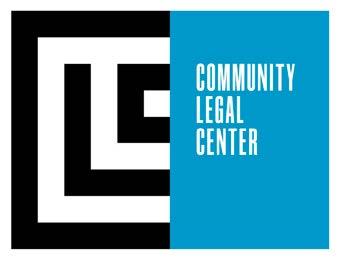
BY RACHEL BRANDON, DIRECTOR OF DEVELOPMENT & COMMUNICATIONS
Community Legal Center’s (CLC) mission is simple and urgent: to provide civil legal services to those with limited means.
That’s a tall order in a city like Memphis, where poverty, displacement, immigration challenges, and housing injustice often collide. Doing this work requires grit, strategy, and community—because in a nonprofit law firm without guaranteed or unlimited funding, the barriers can feel insurmountable.
In Memphis, rising from adversity is part of our DNA. At CLC, we turn that spirit into unified action.
Founded in 1994 by forward-thinking attorneys and community leaders, CLC was one of the first organizations in the region to respond directly to the legal needs of working-class families, immigrants, and everyday people trapped in civil legal crises. With a handful of staff and a mountain of unmet need, CLC has spent the past three decades providing legal stability to the people who need it most—not in theory, but in real, life-changing ways.
Today, we serve clients across four major program areas:
• Immigrant Justice (including asylum, DACA, and family reunification),
• Elder law,
• Civil Cases, and
• Pro Se Parents.
We are proud to represent parents fighting for

custody in unsafe situations, elderly Memphians trying to preserve generational wealth, immigrants fleeing persecution, and working-class families who need civil litigation. Each case represents a family on the brink— and each victory is a lifeline.
We’ve never done this work alone. Over the years, we’ve turned to Memphis lawyers, law students, judges, and community advocates to help us bridge the justice gap. And every time, the Memphis legal community has shown up.
Now, as we grow our impact and prepare for the next chapter of CLC’s work, we’re asking for your support once again.
Like many legal aid organizations, we are navigating a challenging and unpredictable funding environment. While we’ve made strides in improving our internal systems, streamlining operations, and diversifying our revenue, need continues to outpace our capacity.
That’s where you come in.
If you believe that everyone deserves access to justice, regardless of their income or background, we’re asking you to act:
• Make a donation to CLC to help us hire and retain attorneys, expand our programs, and serve more Memphians.
• Volunteer your time or take a pro bono case especially if you have immigration, family, or property law experience.
• Introduce us to your firm’s charitable giving team or foundation or advocate for CLC as a beneficiary of your bar section’s next fundraiser.
We know the Memphis Bar Association is a powerful force for good. You’ve helped build and support vital institutions in our city, and now we’re asking: Will you stand with CLC?
Because at the end of the day, this work isn’t about us. It’s about our neighbors. Our clients are single mothers

trying to keep their children safe, seniors trying to receive proper care, and new Americans trying to build safe, stable lives.
With your support, we can deliver the kind of justice that transforms lives.
Visit communitylegalcenter.org/donate or email me directly at rachelb@clcmemphis.org to get involved. We’ll find a way for you to make an impact.
Rachel Brandon is an experienced nonprofit development leader and relationship builder with a strong track record in donor stewardship, fundraising strategy, and community engagement. She currently serves as Director of Development at CLC, where she leads fundraising efforts to advance equitable access to justice for everyday Memphians.
With over a decade of experience across the nonprofit sector, Rachel has worked within direct service organizations, national intermediaries, and philanthropic serving networks—giving her a 360-degree perspective on how to fund and sustain social change. Her work has consistently focused on strengthening mission-driven programs, cultivating strategic partnerships, and increasing resources through communications and marketing.
Rachel holds an MBA in Organizational Leadership from New Jersey City University and a BA in Journalism and Public Relations from the University of Memphis. She is passionate about fostering inclusive philanthropy, supporting community-led change, and creating pathways to opportunity through advocacy.
Hour begins at 4:30 PM.
celebration of Pro Bono Month, join local agencies, Memphis Area Legal Services, West Tennessee Legal Services, and Community Legal Center, for this informative CLE, which will provide you with the tools needed to take on pro bono cases for these agencies CLE is FREE for attorneys who agree to handle a case for MALS, WTLS, and/or CLC.

















BY WILLIAM TERRELL
Corporate lawyers are fielding questions about supply chain contract language. Real estate attorneys are being asked about industrial warehouse demand. Litigation partners are seeing commercial disputes over tariff cost allocation. The common thread? Clients expect their lawyers to have answers about trade policy regardless of practice area. This administration’s approach to trade policy operates at a velocity that makes traditional legal analysis insufficient. When clients wonder what happens next, responding with careful hedging language does not meet their needs.
The reality is stark: tariff questions are no longer confined to international trade practices. They are landing on every lawyer’s desk because tariffs affect every business. Your clients do not need you to become a trade lawyer overnight; they need you to help them navigate uncertainty in a rapidly changing environment. As clients face unprecedented trade policy uncertainty, lawyers who embrace data-driven analysis will be best equipped to provide meaningful guidance.
To effectively analyze trade data, you first need to understand the current policy landscape. Here is where we stand. Since January 20, 2025, U.S. trade policy has moved at breakneck speed. The current administration has implemented a comprehensive tariff strategy affecting virtually all of the United States’ major trading partners. In addition to resuming the trade fight with China from the President’s first term, the administration announced
tariffs on 60+ countries with high trade deficits on April 2, 2025, which the administration named “Liberation Day.”
The administration has also targeted industries such as steel, aluminum, copper, and auto parts with duties up to 50% and is currently investigating whether to impose tariffs on pharmaceuticals, semiconductors, lumber, and other key industries. Through executive orders, this administration removed the de minimis exception to tariffs on all international shipments, which previously allowed shipments under $800.00 to enter the U.S. without formal clearance procedures. The administration has also indicated that the Department of Justice will ramp up its duty evasion enforcement unit to go after importers believed to be intentionally evading tariffs. The pace of change means that policies announced on Monday can be implemented by Friday, creating an environment where reactive legal advice quickly becomes obsolete.
Whether the President has the authority to levy these tariffs is currently in litigation. The administration has relied on Section 232 of the Trade Administration Act (national security), Section 301 of the Trade Act of 1974 (unfair trade practices), and International Emergency Economic Powers Act (IEEPA-retaliatory tariff measures). Numerous legal challenges in various courts across the country have challenged the administration’s tariff and other trade policies.1 The most serious questions seem to be related to the major question and nondelegation doctrines, and the legality of the tariffs and other trade policies will likely end up before the Supreme Court.
1 For example, the Court of International Trade rejected the President’s argument that the Emergency Economic Powers Act permitted his global tariffs. V.O.S. Selections, Inc. et al. v. United States, No. 25-00066 (Ct. Int’l Trade May 28, 2025), available at https://www.cit.uscourts.gov/sites/cit/files/25-66. pdf. And on August 29, 2025, the U.S. Court of Appeals for the Federal Circuit affirmed this decision. V.O.S. Selections, Inc. et al. v. Donald J. Trump et al., No. 25-1812 (Fed. Cir. Aug. 29, 2025) (holding that the IEEPA did not authorize the “five [challenged] Executive Orders that imposed tariffs of unlimited duration on nearly all goods from nearly every country in the world”), available at https://storage.courtlistener.com/recap/gov.uscourts. cafc.23105/gov.uscourts.cafc.23105.159.0_1.pdf

This article won’t transform you into an economist or trade specialist, but it can help you develop confidence to engage with authoritative data sources and present findings that add genuine value. Lawyers who master this approach will position themselves as strategic advisors rather than reactive counselors. Here are my recommendations on how to use trade data to enhance your practice:
Official (and unofficial) policy sources: Every day, I review the official government publications listing the latest trade deals, tariff announcements, and trade investigations. Most people do not have time for this type of review, so I recommend law firms that synthesize this information effectively: Reed Smith Trump 2.0 Tariff Tracker (https://www. tradecomplianceresourcehub.com/2025/08/29/ trump-2-0-tariff-tracker/), Littler Mendelson’s Executive Order Tracker (https://www.littler. com/news-analysis/asap/executive-order-tracker ), Sandler Travis & Rosenberg’s trade updates ( https://www.strtrade.com/trade-news-resources/ str-trade-report/trade-report), and the best-in-class Miller Chevalier Tariff flow chart (https://www. millerchevalier.com/sites/default/files/resources/ General_Alerts/2025-07-14_Tariffs-Flow-Chart. pdf ) from its “What You Need to Know About Reciprocal Tariffs” publication (https://www. millerchevalier.com/publication/what-you-needknow-about-reciprocal-tariffs-updated#flowchart).
Understand the immediate impact: The latest trade changes will impact your clients. For instance, if you represent a commercial developer that is looking to build a new 12-story, mixed-use, development, and it procures steel and aluminum from abroad, it will need to factor in the reciprocal tariffs for the particular country (10% at least) and the commodity tariffs (50% for steel and aluminum).
Predict the future with data: No one knows what this administration will do day-to-day, but it operates under guiding principles that can help you provide long-term analysis. The administration has said at various stages that its trade agenda is designed to:
• Raise revenue;
• Close trade deficits;
• Protect national security;
• Address unfair trade practices; and
• Bring manufacturing back to the U.S.
Until the federal midterm elections in November 2026, the administration likely will have little appetite to move away from its stated goals. Knowing that its policies are likely here to stay for the next 15 months or so (at least), we can use data to forecast potential impact to clients.
For instance, if your clients’ supply chains depend on China, you can view the U.S. Census Bureau trade data to see that imports from China dropped to $20B in May 2025, the lowest since 2020 and 50% below January 2025 levels. See Trade in Goods with China, available at https:// www.census.gov/foreign-trade/balance/c5700.html.
Using FRED (St. Louis Federal Reserve data tool, available at https://fred.stlouisfed.org/categories/17), you can see that U.S. imports fell 9% from Q1 to Q2 2025 ($1.13 trillion to $1.03 trillion), meaning that after a brief spike to import goods before tariffs, import volumes are trending down. This downward trend could mean that businesses may begin passing on tariff costs to consumers as their Q1 stockpiles run out. Other tools with insightful trade data include UN Comtrade (https://comtrade.un.org/), World Trade Organization Trade Data Portal (https://globaltradedata.wto.org/), and commercial subscriptions like Panjiva and Import Genius.
The key is using all three categories together. First, official sources reveal policy intentions. Second, understanding the economic impact allows you to digest how the policies impact your clients. And real-time data allows you to forecast potential future impact to your clients.
A word on AI tools: While ChatGPT, Claude, and Gemini can synthesize trade data effectively, prompts matter. My recommendation: pull information from the sources above first, and then ask AI specific questions about that data. Open-ended trade questions can yield conflicting results. For example, I asked ChatGPT and ClaudeAI the effective tariff rate for China as of August 1, 2025, and received different answers (32% vs 51%). Both were technically correct: the effective tariff rate is not derived from an authoritative source. The

rate depends on how it is measured and what products it includes. So two sources can have different effective tariff rates because they weigh the tariffs differently (by sector, import value, or potential domestic impact). This exercise shows that without understanding how to decipher the context yourself, you could provide wrong information to clients.
This information is here to help you, not overwhelm you. Start small and build competency systematically. Start with one reliable source and build familiarity before adding others. Yale Budget Lab reports (https:// budgetlab.yale.edu/) are published quarterly and provide comprehensive overviews perfect for developing baseline knowledge. Once you feel comfortable with economic modeling concepts, add FRED indicators relevant to your clients’ industries.
When presenting findings to clients, distinguish between data analysis and legal advice: “The economic data suggests X trend, which creates Y legal considerations for your business.” Know when to refer clients to trade counsel versus handling issues in-house (or yourself). Compliance questions, customs classifications, and



William Terrell is an attorney with extensive international trade experience, having served in various roles with Amazon and FedEx over the past 9+ years. He is a licensed Certified Export Specialist and Certified Customs Specialist through the NCBFAA and recently passed the Licensed Customs Broker Exam. Feel free to connect with him on LinkedIn if you would like to discuss tariffs in greater detail.
regulatory proceedings require specialized expertise. Strategic business planning informed by economic data falls within general counsel capabilities when properly grounded in reliable sources.
The goal is not to replace trade lawyers—it’s to provide informed counsel who help clients make better decisions in an uncertain environment. In my experience supporting global operations, the most valuable legal advisors were those who could synthesize complex information and translate it into actionable guidance.





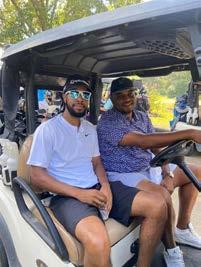



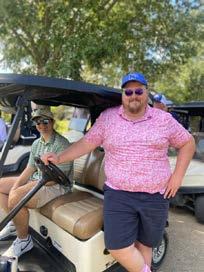

BY GREG SISKIND AND JULIA SCHARFF
Even though we’re only in the first year of the new administration, from an immigration perspective—or any perspective—we’ve never seen in our lifetimes the frenzy of activity that we’ve seen in 2025. These changes in immigration policy and enforcement will impact the fate of millions of people, both with and without legal status—not to mention the plethora of U.S. citizens both directly and indirectly affected by these changes. This is no small group. As of 2023, immigrants represent nearly 15% of the United States population.1
This article will first review major changes to date under the Trump administration and then provide practice pointers for non-immigration lawyers, specifically in the areas of criminal, family, and business law, to address how new policy changes may be relevant for their clients.
While there have been hundreds of changes in U.S. immigration law and policy since January 20, 2025, the following ten updates have the most severe consequences:
1.
While much of the administration’s rhetoric talks about removing people illegally present in the U.S., many announcements and reports have involved the removal of people present in the U.S. with legal status.
Parole2 is for individuals outside the United States who may request to be paroled into the United States based on urgent humanitarian reasons or a significant public benefit. United for Ukraine (U4U) is one example of a parole program for Ukrainians seeking entry to the United States since the war broke out. Similarly, Cuba, Haiti, Nicaragua, and Venezuela (CHNV) were announced to allow discretionary grants of parole for those with a U.S.-based financial sponsor.
The administration has stopped admitting people
under various humanitarian parole programs designated by President Biden, and they are not renewing parole for those already here. Approximately 900,000 people in nine countries have benefited from parole (including 150,000 from Ukraine and the rest from countries in the Caribbean and Latin America).
Temporary Protected Status (TPS) is a temporary status granted by the Secretary of Homeland Security to nationals of specifically designated countries that are confronting an ongoing armed conflict, environmental disaster, or other extraordinary conditions. Congress created TPS in the Immigration Act of 1990, and TPS has been a lifeline for individuals in the U.S. who cannot return home due to unsafe conditions, as it provides them with a work permit and protection from deportation.3
The White House has announced that the government is revoking TPS for seven countries (Venezuela, Afghanistan, Cameroon, Nepal, Haiti, Honduras, and Nicaragua) over the coming months. This revocation results in another 800,000+ individuals losing their lawful status. In all of these cases, courts are determining if the administration has followed the rules for revoking these programs.
1 “More than 47.8 million immigrants lived in the United States in 2023, the most in U.S. history. That year, immigrants comprised 14.3 percent of the U.S. population of 331.9 million, close to the record level of 14.8 percent set in 1890.” See Jeanne Batalova, Frequntly Requested Statistics on Immigrants and Immigration in the United States, MPI (March 12, 2025), https://www.migrationpolicy.org/article/frequently-requested-statisticsimmigrants-and-immigration-united-states
2 “The discretionary decision allows inadmissible aliens to leave an inspection facility freely so that, although they are not admitted to the United States, they are permitted to be physically present in the United States. Parole is granted on a case-by-case basis for urgent humanitarian reasons or significant public benefit. Parole is not an “admission” or “entry.” The paroled alien is treated as an applicant for admission. Parole falls under INA section 212(d)(5) (A).” See USCIS Glossary, https://www.uscis.gov/glossary-term/51412
3 Temporary Protected Status: An Overview, American Immigration Council (June 11, 2025), https://www.americanimmigrationcouncil.org/fact-sheet/ temporary-protected-status-overview/

DHS published an Interim Final Rule, effective April 11, 2025, announcing a requirement for all noncitizens 14 years or older in the United States (with listed exceptions) to register with the federal government and submit for fingerprinting. Parents and legal guardians are also required to register noncitizen children under the age of 14, and those children must apply for re-registration to be fingerprinted within 30 days of turning 14 years old.4 This rule also applies to visitors, including Canadians, who must apply for registration and fingerprinting if they are in the U.S. for 30 days or more. All non-citizens 18 or older must carry, at all times, proof of registration issued by DHS.
Failure to comply with the registration requirement can result in misdemeanor criminal violations, punishable by a fine of up to $5,000 or imprisonment for not more than 30 days, or both—and an unclear impact on future benefits.5
The administration has so far successfully held off attempts to stop the registration program via litigation. Many immigrants fear that registering will expose them to ICE/DHS and potential detention, removal proceedings, expedited deportation, or even criminal prosecution.
Many employees have resigned from USCIS, and the administration’s hiring strategy involves bringing in one new hire for every four resigning staff members. Consular chiefs at several posts have been told to terminate up to 20% of local hires. And in July 2025, the State Department started firing more than 1,350 workers, including 246 foreign service officers.6 The administration has also proposed major cuts to USCIS in the budget bill, diverted USCIS staff to ICE, and tightened the visa interview waiver program.
A full ban has been imposed on U.S. entry (immigrant and non-immigrant visas) for nationals of twelve countries: Afghanistan, Burma/Myanmar, Chad, Republic of Congo, Equatorial Guinea, Eritrea, Haiti,
Iran, Libya, Somalia, Sudan, and Yemen. A similar ban exempting some non-immigrant categories was announced for Burundi, Cuba, Laos, Sierra Leone, Togo, Turkmenistan, and Venezuela. The administration has indicated that it may add another 36 countries to the list.
Initially, some students involved in protests over the Middle East (or who simply posted on social media about the conflict) found themselves stripped of their student status and in many cases removed from the country. Shortly after that, thousands of students with minor legal infractions (including speeding and running stop signs) found their student status and visas revoked. Litigation has led to the successful reinstatement of many of these students’ student status, but many left the U.S. and have not been able to reenter because their visas were revoked. Litigation is challenging the visa revocations.7
An initial executive order suspended the refugee program. The President has a lot of authority to set the number of refugees that can come, but Congress has a role too. NGOs that work with the U.S. government to house refugees abroad and resettle them in the U.S. have faced financial problems as a result of the administration’s actions. They have taken to litigation both to restore funding commitments and to require the continued processing of refugees.
One of President Trump’s January 20, 2025, executive orders bans birthright citizenship for children of undocumented and non-immigrant parents. Four lawsuits challenged the order, and all led to national injunctions. The Trump administration asked the Supreme Court to intervene, and the Supreme Court held by a 6-3 margin that the district courts did not have the power to issue national injunctions unless doing so is essential to fully remedy the plaintiffs’ own injuries. The Supreme Court arguments did suggest that a certified class action or an action by a state suing on behalf of its residents may still be appropriate. On July 10, 2025, a judge in one of the four lawsuits certified a class action and issued a new nationwide preliminary injunction.8
4 See https://www.uscis.gov/alienregistration
5 Id.
6 Humeyra Pamuk, State Department starts firing more than 1,350 workers in Trump’s shake-up of diplomatic corps, Reuters (July 11, 2025), https:// www.reuters.com/legal/litigation/state-department-says-it-will-fire-more-than-1350-workers-trumps-shake-up-2025-07-11/?utm_source=chatgpt.com
7 The author of this article is an attorney in one of the mass lawsuits challenging students’ visa denials.
8 Ian R. Macdonald, Update: Federal Judge Issues Nationwide Class-Based Injunction in Birthright Citizenship Case, Greenburg Traurig (July 18, 2025),

The act passed Congress early in the administration and expands mandatory detention for noncitizens arrested or charged with specific crimes, grants state attorneys general the authority to sue the federal government if they believe state immigration policies are inadequate, and affects visa stamping for foreign nationals from countries that do not cooperate with the U.S. in returning deported citizens. Note that detained individuals cannot seek release even if charges are dropped, and many immigrants with legal status—like asylum seekers, DACA, TPS, and even minors—can be detained under this law.9
The administration has rescinded a previous policy that limited ICE actions in sensitive locations, allowing agents greater authority. This change may lead to increased enforcement actions in areas like schools, hospitals, and places of worship. Despite these changes, ICE agents still require judicial warrants to enter private areas of these locations.10
Congress has passed legislation now signed by the President which injects nearly $170 billion into immigrant enforcement initiatives, including hiring tens of thousands of additional ICE and Border Patrol officers, completing the building of the border wall, and doubling ICE’s detention capacity.
These ten changes could significantly affect lawyers practicing in areas outside immigration law.
Family lawyers may see an uptick in custody, guardianship, and SIJ (Special Immigrant Juvenile) cases as parents lose status or are deported. Clients may seek emergency custody arrangement for U.S. citizen children or need legal help preserving family unity amid lost status or if a U.S.-born child lacks status because of the birthright citizenship executive order.
Clients may hesitate to appear in family court hearings (e.g., for child support or protection orders) for fear of
being flagged by immigration authorities. Many schools in Shelby County have reported children not attending when ICE enforcement activity is even rumored to be at or near a school. Parents could potentially end up facing misdemeanor charges for educational neglect in these cases.11
Lawyers may see immigration enforcement efforts trigger child welfare investigations and attempts to terminate parental rights.
Family lawyers also need to consider the following general rules:
1. Immigration status can complicate divorce.
2. A marriage-based green card requires the U.S. citizen spouse to sign an Affidavit of Support, which can create long-term obligations on the U.S. citizen spouse.
3. Immigrant victims of domestic violence may be eligible for relief.
4. Marriage does not automatically fix immigration problems.
5. Adoption does not guarantee immigration benefits.
6. Be aware of the Hague Adoption Convention.
7. Immigration status may affect access to public benefits.
Criminal lawyers have many new issues to consider. First, when an immigrant loses legal immigration status, as outlined above, defense attorneys must treat all charges—especially misdemeanors—with heightened caution. For example, F-1 students involved in relatively minor infractions, like moving violations, have found themselves facing visa revocations.
Failing to register under the new program described above is now a federal misdemeanor, and criminal lawyers may find themselves representing clients who face serious immigration consequences as a result of this new law.
Under the Laken Riley Act, clients charged with offenses like shoplifting or simple assault may be subject to mandatory detention with no possibility of release even if they are not convicted. And detention without
https://www.gtlaw-insidebusinessimmigration.com/president-trumps-administration/federal-judge-issues-nationwide-class-based-injunction-inbirthright-citizenship-case
9 What Does the Laken Riley Act Require?, Catholic Legal Immigration Network (Feb. 21, 2025), https://www.cliniclegal.org/resources/what-does-lakenriley-act-require
10 Rebecca Santana, Trump Administration Throws Out Policies Limiting Migrant Arrests at Sensitive Locations, Associated Press (Jan. 21, 2025), https:// apnews.com/article/immigration-enforcement-sensitive-locations-trump-ab0d2d2652e9df696f14410ebb52a1fc
11 Tenn. Code Ann. §§ 40-35-111, 49-6-3009 (2019).

bond is possible. Criminal lawyers must coordinate with immigration counsel at arrest, as bail hearings may be meaningless once ICE issues a detainer.
ICE may pick up clients during probation checkins, court appearances, or even visits to medical facilities. Defense attorneys must proactively advise noncitizen clients about safe travel routes, legal protections, and may need to advocate for virtual appearances when feasible. And criminal lawyers should expect more of an ICE presence in criminal courts and more coordinated ICE pickups at jails with fewer district attorneys interested in considering immigration hardship as a basis for leniency. Criminal lawyers need to be even more focused on mitigating immigration risks at the charging and plea negotiation stage.
Lawyers representing businesses need to be aware of how the current immigration environment impacts their clients. Many may want to discuss how employees working legally at a company may suddenly face the loss of their work authorization and proactively plan, in coordination with immigration counsel, alternative avenues for visa sponsorship. Companies should also review rules regarding layoffs and about business continuity risks.
Business lawyers also need to consider counseling their clients about the threat of ICE worksite raids and I-9 audits. With ICE’s massive infusion of funds from Congress (ICE is now larger than all other federal law enforcement agencies as a result of the “Big Bill”), the odds of companies being targeted will increase significantly. Lawyers should coordinate with immigration counsel to help employers develop plans for how their employees should respond when ICE shows up (especially employers like health care facilities, schools, and houses of worship that are no longer exempt from being the site of enforcement actions). And they should encourage their clients to work with immigration counsel to conduct preventive I-9 audits to assess their risk and try to address any problems on the front end.
Finally, business lawyers need to be cognizant of immigration issues when advising their clients involved in mergers and acquisitions, as immigration now is a more likely source of liability for buyers of businesses. Businesses should incorporate a review of immigration issues into the due diligence process, as they are no longer
extraneous issues. And immigration issues may factor into layoffs and downsizing decisions, so employers need to be more attuned to the significant impact such decisions can make. For example, USCIS appears to no longer honor the 60-day grace period H-1B workers have enjoyed for the last eight years under a 2017 regulation, meaning that terminating H-1B visa holders with no notice could have devastating consequences for them.
In conclusion, while family, criminal, and business lawyers do not need to become immigration law experts, they do need to be able to spot issues and be more proactive in reaching out early to immigration counsel when problems may arise.

Greg Siskind is an immigration lawyer and a legal technology company founder. He started Siskind Susser, his immigration law firm, in 1994, and Visalaw Ventures, his software and book publishing company, in 2015. He is a former AILA Board of Governors member and the current Chair of the International Bar Association’s Immigration and Nationality Law Committee. Siskind is the author of seven books, including the 4000 page AILA "Cookbook." He launched the first immigration law website in 1994, followed by the first law blog in 1998. His foray into AI began in 2015, culminating in the launch of Gen with AILA in January 2024. His contributions have earned him AILA’s Advocacy Award and its inaugural Technology Award as well as the ABA’s James E. Keane Award for e-Lawyering and the 2024 American Legal Technology Award in the category of AI. He’s also a co-founder of IMMpact Litigation, specializing in mass immigration litigation.

Julia Scharff is an immigration attorney in the Memphis office of Siskind Susser, where her practice is focused primarily on employment-based visa work. Before attending law school, Julia worked at Siskind Susser for two years as a paralegal focused on H-1Bs. She has since gained experience with O-1s, EB-1 multinational executive and manager petitions, EB-1 extraordinary ability petitions, and PERM labor certification based green cards, as well as a variety of other immigrant and nonimmigrant visa matters.



BY MAGISTRATE JUDGE MITZI H. POLLARD
Courtrooms are sacred spaces demanding decorum and respect, and their governing rules must be followed. Despite this fact, the seemingly innocent act of using smart devices in court remains all too common. Whether one is an attorney, litigant, witness, juror, or spectator, the urge to send or read a quick message can appear benign—but it is anything but. Such conduct can result in contempt citations, monetary sanctions, incarceration, mistrials, or lasting harm to one’s credibility.
The ubiquity of mobile devices has blurred the line between permissible utility and conduct that threatens the integrity of judicial proceedings. More and more, judges, bailiffs, and court personnel are called upon to address disruptions stemming from unauthorized recordings, social media use, and texting. These behaviors carry significant legal and reputational consequences and take up unnecessary time. Understanding the seriousness of these risks transcends courtroom etiquette: it is critical to preserving the fairness of the process and protecting the parties’ legal interests. This article discusses a few reasons to think twice before pulling out your phone in court.
The courtroom is not just a formal physical space—it is a sanctuary governed by rules of procedure, tradition, and the authority of the bench. Judges possess inherent and statutory powers to maintain order, and texting during proceedings is often viewed as a direct affront to that authority. Depending on the context, this seemingly minor act may result in a finding of contempt of court.
Contempt can be civil or criminal and direct or indirect, and the penalties vary accordingly. Under Tennessee law, for instance, criminal contempt includes "willful misbehavior" in the presence of the court that obstructs justice or shows disrespect to the court’s authority. Tenn. Code Ann. § 29-9-102. A judge may issue an immediate rebuke or impose more severe penalties, such as a fine, imprisonment, or both.
For attorneys, texting in court may not only result in contempt proceedings but may also breach ethical
rules of professional conduct towards the tribunal, possibly triggering a board complaint. Litigants risk undermining their credibility and alienating the judge or jury—consequences that could shift the trajectory of an entire case. Even for observers or subpoenaed witnesses, engaging in unauthorized phone use can lead to removal from the courtroom or fines; in some cases, it may warrant the issuance of a show-cause order.
In a nutshell, texting in court is not just rude—it can be legally risky. Being vigilant to respect and understand the boundaries of courtroom behavior is the bedrock to maintaining the dignity of the judicial process and preventing unintended legal consequences.
In Shelby County, the Local Rules of Practice govern courtroom conduct. Far from being mere suggestions, these rules include strict prohibitions on the use of electronic devices and carry the force of law. Court staff and judicial officers rigorously enforce them.
Under the Shelby County Local Rules of Practice for Circuit, Chancery, and Criminal Courts, cell phones, pagers, and personal data assistants must be turned off before entering the courtroom. Rule 1(D) provides, in pertinent part:
All electronic devices, including cellular telephones, pagers, and wristwatch alarms, must be turned off before entering the courtroom. No cameras, video, or audio recording equipment will be allowed in the courtroom without prior Court approval.

These rules bind all individuals in the courtroom, including attorneys, litigants, witnesses, staff, and the public. The rationale is to prevent disruptions, protect the privacy of proceedings, and ensure an environment of fairness, dignity, and respect.
Moreover, unauthorized recording or photographing in the courtroom—sometimes attempted via mobile phones—may violate both this local rule and Tennessee Supreme Court Rule 30, which governs media coverage of court proceedings and requires prior approval.
Modern smartphones are not just communication devices: they are powerful, lightweight tools capable of recording, photographing, videoing, streaming, and disseminating courtroom content instantaneously. For this reason, courts across the country, including those in Tennessee, impose strict prohibitions on unauthorized recording and broadcasting from inside the courtroom. These restrictions are not limited to members of the media; they apply with equal force to litigants, attorneys, witnesses, jurors, and spectators.
As mentioned above, Tennessee Supreme Court Rule 30 governs media coverage of court proceedings. While it permits recording and broadcasting under certain controlled conditions, it requires advance permission from the court and compliance with stringent procedural safeguards. Any attempt to circumvent this rule— whether by texting live updates, photographing exhibits, or posting real-time commentary to social media—can be construed as an unauthorized transmission and a direct violation of court orders.
Importantly, courts do not treat violations of this rule as minor infractions. Depending on the nature and intent of the conduct, a court may issue civil contempt citations, impose monetary sanctions, or (in extreme cases) refer the matter for criminal prosecution. For instance, taking unauthorized photos or videos of a sequestered witness, juror, or minor child may not only violate courtroom rules but also run afoul of state or federal privacy laws, exposing one to civil liability or charges related to evidence tampering or obstruction of justice. These acts can also contaminate jury pools, jeopardize witness safety, and compromise the integrity of the judicial system. In such instances, judges may declare a mistrial, impose media blackouts, or remove individuals from the courtroom entirely.
Moreover, even something as seemingly innocuous as texting a real-time update about witness testimony or judicial rulings may fall within the ambit of indirect contempt if the communication violates a court’s standing order or interferes with the administration of justice.
In short, the courtroom is a protected legal forum— not a platform for live reporting or casual commentary. Anyone found transmitting or recording proceedings without proper authorization risks undermining not only courts’ dignity but also their legal standing. When in doubt, the safest practice is to assume that all forms of live communication and recording are prohibited unless expressly permitted by the presiding judge.
In the courtroom, perception often holds as much weight, if not more, than procedure. Even when no explicit rule is broken, the simple act of glancing at a phone or typing out a message during proceedings can leave a lasting unfavorable impression. Judicial officers and courtroom observers are acutely attuned to body language, demeanor, and attentiveness—factors that can subtly shape assessments of professionalism, credibility, and sincerity.
The impact of being distracted by a cell phone may taint a litigant’s appearance of involvement in or respect for the legal process, which can affect how the court or opposing counsel receives or views testimony or argument. A judge or opposing counsel may take nonchalant behavior as ignoring the seriousness of the matter, especially in high-stakes or emotionally charged cases. The damage can be even worse for attorneys who text during court proceedings. It can be viewed as disrespectful and discourteous, undermining one’s reputation with peers and the bench.
Witnesses are particularly vulnerable. Jurors and judges rely heavily on verbal and nonverbal cues to assess demeanor, credibility, and reliability. A witness who appears distracted or uninterested could unintentionally weaken the weight of their testimony. In high-profile or contentious cases, this perception can have unwanted consequences on the outcome.
Importantly, courtroom conduct is often remembered far beyond the hearing itself. Appellate courts may review transcripts, but trial judges and jurors respond to the human elements of the proceeding. In this context, even seemingly minor lapses in courtroom attentiveness can

diminish the trustworthiness of a witness, the persuasive force of an argument, or the overall effectiveness of counsel. Maintaining full attention during court is not just about avoiding contempt—it is about being fully present before the court.
In the fast-paced, impulsive era of modern communication, texting during court proceedings can inadvertently breach fundamental legal protections and procedural safeguards. What may seem like a simple text can quickly become a source of evidentiary disputes, grounds for reversal, or even a source of ethical violations.
For lawyers and clients, the most significant risk lies in compromising attorney-client privilege—a cornerstone of legal confidentiality. Privilege generally protects communications between clients and their attorneys; its application, however, is not absolute. Text messages sent over unsecured networks may not be considered confidential. Courts have consistently held that the presence—or even potential access—of a third party can waive privilege, especially where clients fail to take reasonable precautions to protect the privacy of their communications.
For jurors, the legal risks are even more acute. Any communication—whether by text, email, or social media—that touches on case facts, witness credibility, or deliberative matters can constitute juror misconduct. Tennessee courts have emphasized the sanctity of an impartial jury, and unauthorized communications can not only trigger a mistrial but also lead to civil contempt proceedings or criminal charges, particularly where a juror is found to have influenced the outcome or violated a court’s instruction.
Moreover, texting during trial may lead to the inadvertent dissemination of confidential information or protected identities—violations that can carry steep consequences under ethical guidelines and court rules. For example, revealing the name of a minor witness or information related to sealed evidence could expose a party to civil liability or sanctions.
Even non-participants—such as spectators, support persons, or members of the media—may unintentionally breach courtroom privacy by texting or live-reporting protected details. This is especially problematic in high-profile cases or proceedings involving juveniles, confidential informants, or victims of sensitive crimes.
In short, the courtroom is no place for a quick text. Whether by compromising privileged communications, tainting a jury, or inadvertently disclosing sensitive information, texting can result in a snafu that far exceeds the convenience of the moment. What begins as a private exchange can quickly escalate into a procedural disaster.
A courtroom is a space in which little things matter: every word, pause, and inflection may carry legal significance. Trials and hearings often turn on subtle distinctions—whether in witness testimony, evidentiary rulings, or judicial instructions. In this environment, distraction is not just inconvenient—it is dangerous. The simple act of texting, even for a few moments, can cause a litigant, juror, or attorney to miss a critical development with lasting consequences.
For parties to the case, distraction can lead to misunderstandings about the facts, failure to respond to objections or questions, or the loss of opportunities to consult meaningfully with counsel. A party that appears disengaged may also weaken the persuasive force of their case in the eyes of the judge or jury.
In today’s Bluetooth world, wearing earbuds or similar ear-in devices during court proceedings can give the appearance of distraction. They may suggest foul play, such as an attorney, litigant, witness, or juror receiving or transmitting information. This impression can erode trust, call into question one's credibility, or invite judicial inquiry.
Jurors in particular must give their full attention to the proceedings. Under Tennessee law, jurors are sworn to “well and truly try the matter in issue and render a true verdict according to the law and evidence.” Any lapse in attention—even momentary—can compromise the fairness of the process and, if discovered, may be grounds for a mistrial or removal. A distracted juror also places the burden on fellow jurors and the court to fill in gaps, potentially skewing deliberations or creating tension in the jury room.
For attorneys, the risks of distraction are even more acute. Texting during proceedings can cause counsel to miss objections, evidentiary rulings, or subtle cues from the bench. More seriously, it may convey to the court a lack of preparation or commitment. Judges are often susceptible to body language and courtroom conduct, and visible signs of inattention—such as checking a phone during opposing counsel’s argument—may result

in diminished credibility or loss of professional rapport with the court.
Courtroom attentiveness is not merely a matter of decorum; it is a professional and legal responsibility. Whether representing a client, seeking justice, or rendering a verdict, all participants are expected to be fully present—mentally and physically. In a setting where every detail can change the outcome, distraction is a liability no one can afford.
It takes more than just common sense to navigate courtroom expectations in this digital age—it requires awareness of evolving rules and respect for the sanctity of the judicial process. While the risks of unauthorized phone use are serious, they are entirely avoidable. The following tips can help litigants, attorneys, witnesses, and the public remain in compliance with the law and maintain the integrity of courtroom proceedings:
• Silence and/or Power Off Your Phone Before Entering the Courtroom
A muted phone is not enough. Vibration alerts or illuminated screens can be perceived as disruptive. To avoid inadvertent violations, the safest approach is to make your phone invisible and inaudible before stepping into the courtroom. “Do not disturb” mode is your safest bet.
• Request Permission for Urgent Communications
Courts recognize that emergencies happen. If you anticipate an urgent need to communicate during court hours—such as a medical issue or a critical work obligation—notify court staff or the presiding judge before the proceeding begins. In many jurisdictions, including Tennessee, judges have discretion to allow limited phone use under clearly defined circumstances,

especially if the request is made respectfully and does not interfere with the proceedings.
• Understand and Follow Court-Specific Policies
Rules regarding phone use can vary significantly from one courthouse—or even one courtroom—to another. Always check posted signage, local court rules, or ask courtroom personnel for guidance. Importantly, even where limited use is permitted, phones are strictly prohibited near jury boxes, counsel tables, witness stands, and judicial benches—areas where the potential for disruption or perception of impropriety is exceptionally high.
• Use
Many courthouses have lobbies or hallways where device use is permitted. If you must send or receive a message, step outside the courtroom during a recess or break. Avoid standing near entrances or doorways, where noise or light from a phone can still distract those inside.
• For Attorneys: Set Expectations with Clients and Witnesses
Counsel should advise their clients and any testifying witnesses in advance about court restrictions on mobile devices. Client missteps can reflect poorly on counsel, especially if they lead to interruptions, judicial admonishments, or delays. Establishing these expectations ahead of time is not just prudent—it reflects professional diligence.
Ultimately, staying on the right side of the law requires more than silence. It requires situational awareness and respect for the courtroom as a theater of justice. Eyes should be on the proceedings, not screens. And above all, respect—for the court, its officers, and the process— should be visibly maintained at all times. Because in the courtroom, your silence speaks volumes.
Magistrate Judge Mitzi H. Pollard was appointed to the Juvenile Court of Memphis and Shelby County in 2015. A former sole practitioner with over a decade of experience in juvenile and family law, she previously clerked for Chancellor Floyd Peete, Jr. and taught conflict resolution at Bethel University. She holds a B.S. in Computer Science from North Carolina Central University and a J.D. from the University of Memphis. Judge Pollard is passionate about truancy prevention and connecting families with vital resources. She is active in several legal organizations and community outreach efforts. She and her husband, Brian, share four adult children and enjoy travel, gardening, and time with their growing family.

View Brochure


BY CLAUDIA WILLIAMS HYMAN
Recently, a former client left me a voice message requesting a callback. For those in legal services, this kind of call can raise a bit of anxiety. Is there a new legal issue? Have the former client’s circumstances changed so that they now require additional legal support? I thought about these questions as I returned the client’s call. She called for a different reason:
“I didn’t want anything. I just wanted to tell you that I saw you on the news, and you did a good job. Y’all are doing good work, and I appreciate everything you did to help me.”
I told her how much I appreciated the call. Facts, figures, and various forms of feedback can suggest the work is making an impact, yet they do not compare to having a client tell us that we supported her in improving her life for the better. The desire to improve lives is what brings many people, including me, to the practice of law. These moments of fulfillment, along with professional ethical duties, lead many law students and attorneys to contribute their time and expertise to pro bono efforts. According to the Standing Committee on Pro Bono and Public Service of the ABA, attorneys who engaged in pro bono work in 2022 reported they were most motivated by helping people in need, reducing social inequality, and meeting ethical obligations.1
When I speak to attorneys and law students about volunteering with pro bono programs, I highlight the strategic advantages pro bono provides as they shape their legal careers. One of the significant advantages is the opportunity to gain experience working directly with clients. While law schools have worked to incorporate more opportunities for students to develop practical
skills, many recent law graduates enter the profession without ever having direct client interaction. Pro bono volunteer opportunities with legal services organizations like WTLS provide early-career lawyers and students with hands-on experience working directly with clients and navigating real-time challenges.
Law students volunteering with WTLS are often surprised at how much time I dedicate to preparing them for client interaction. After years of being immersed in case law and hypotheticals, they sometimes expect clients to come prepared to succinctly present the core legal issues and relevant facts that will allow them to resolve their legal problem. As I stress the importance of building rapport and trust, active listening, and respecting your clients’ expertise in their lived experiences, some students may wonder if these hours of training are helpful or relevant. When we start serving clients, typically during a community legal clinic, these skills become self-proving. Confidence is a substantive byproduct of practice and preparation. Pro bono legal services provide a variety of opportunities to gain both.
For many early-career attorneys, direct-client experiences can be few and far between. Pro bono legal services provide an opportunity to supplement new lawyers’ core skill development (e.g., courtroom practice and oral or written advocacy) while also providing space to practice the skills that can improve their quality of legal representation. Can you be fully present with clients to ensure that you hear their concerns and goals? Can you practice empathy during moments of frustration and focus on moving forward? Can you respond to real-time challenges with a calm and steady demeanor? These skills are pillars of effective lawyering, especially if you desire to contribute to the common good.
1 American Bar Association Standing Committee on Pro Bono and Public Service, Supporting Justice V: A Report on the Pro Bono Work of America’s Lawyers at 7 (ABA Jan. 2025), available at https://www.americanbar.org/content/dam/aba/administrative/probono_public_service/other-documents/ supporting-justice-v.pdf

Volunteering provides many other benefits, such as increasing access to justice for underserved communities, practicing legal skills not commonly associated with your practice area, and gaining exposure to other legal practices and approaches to legal work. As we embark on celebrating Pro Bono Month in October, I encourage law schools to integrate pro bono experiences into their curricula, not as a purely optional recommendation but as an essential component of foundational skill-building and professional development. I implore legal employers and law firms to incorporate pro bono service into their professional development programs. I urge law students and early-career attorneys to actively seek pro bono opportunities to develop and strengthen their practical skills. Real-world skills require real-world experiences.
To senior and more experienced attorneys, our organizations need you. Join forces with legal services organizations to share your wisdom, career insights, and professional judgment. Invite the attorneys who work with you to volunteer for legal clinics and offer to share
your knowledge by leading CLE workshops. If your current role falls into either of these categories, we at WTLS are happy to work with you to ensure the opportunities are fruitful and will provide training, practice resources, and support. And yes, you will also likely feel good about this work and your contributions to this vibrant, transformative community, too.

Claudia Williams Hyman is the Pro Bono Staff Attorney with West Tennessee Legal Services in the Memphis Office. She obtained a J.D. from Howard University School of Law, a master’s degree in Sociology from the University of Memphis, and a bachelor’s degree from Bowdoin College. Claudia is a native Memphian with experience in labor law, family law, and civil rights law. She is also an experienced community engagement strategist who helps organizations build and strengthen relationships with the communities they serve.











Covers jury trials from January 1, 2025 – June 30, 2025
CRIMINAL COURT DIVISION I –
JUDGE PAULA SKAHAN
State of Tennessee v. Christian Pitts, No. BC5469
Trial from February 3-7, 2025
Assistant District Attorneys General: Theresa McCusker and Atina Stravopolous Defense: John Dolan
Charges in Indictment: First-Degree Murder and being a convicted felon in possession of handgun.
• Verdict: Guilty of Second-Degree Murder (a lesser-included offense) and being a convicted felon in possession of handgun.
• Sentencing: Appeal pending.
State of Tennessee v. Gina Kilgore, No. BC5099
Trial from June 2-5, 2025
Assistant District Attorneys General: Dan Buchanan and Daniel Woodford
Defense: Glover Wright
Charges in Indictment: Tenncare fraud over $60,000 and theft of property over $60,000.
• Verdict: Guilty of property theft count; not guilty of fraud count.
• Sentencing: Set for September 15, 2025.
CRIMINAL COURT DIVISION II -
JUDGE JENNIFER FITZGERALD
State of Tennessee v. Cindy Smith, No. BC0225
Trial from June 2-5, 2025
Assistant District Attorneys General: Kindle Nance and Shannon Mason
Defense: Claiborne Ferguson
Charges in Indictment: Driving under the influence.
• Verdict: Guilty.
• Sentencing: Motion for New Trial set September 3, 2025.
CRIMINAL COURT DIVISION IIIJUDGE JAMES JONES JR.
State of Tennessee v. Gerrin Kimbro, No. BB9954
Trial from January 6-12, 2025
Assistant District Attorney General: Rob Steele
Defense: Josie Holland
Charges in Indictment: Rape of a child, rape, aggravated sexual battery.
• Verdict: Not guilty on all counts.
State of Tennessee v. Tyrone Banks and Tony Banks, No. BD2010
Trial on January 14, 2025
Assistant District Attorneys General: Haden Lawyer and Tyler Schembri
Defense: Scott Hall and Jack Sherman
Charges in Indictment: Simple assault.
• Verdict: Guilty; motion for new trial granted.
State of Tennessee v. Quaverre Rogers, No. BD6834
Trial from March 3-7, 2025
Assistant District Attorneys General: Devon Dennis and Haden Lawyer
Defense: John Zastrow and Lee Filderman
Charges in Indictment: First-degree murder and possession of a prohibited weapon.
• Verdict: Guilty of voluntary manslaughter (a lesser-included offense) and possession of a prohibited weapon.
• Sentencing: Motion for new trial denied; appeal pending.
State of Tennessee v. Samuel Green, No. BD2588A
Trial from March 17-21, 2025
Assistant District Attorneys General: Caleb Sanders and Tyler Schembri
Defense: Melissa Baker
Charges in Indictment: Attempted first-degree murder, aggravated assault, being a convicted felon in possession of a handgun.
• Verdict: Not guilty on all counts.

State of Tennessee v. Kenneth Givens, No. BB7571
Trial from March 31-April 3, 2025
Assistant District Attorneys General: Haden Lawyer and Tyler Schembri
Defense: Gregg Carmen and Michael Johnson
Charges in Indictment: One count of first-degree murder, two counts of attempted first-degree murder, and two counts of employing a firearm with intent to commit a felony.
• Verdict: Guilty of voluntary manslaughter, two counts of attempted voluntary manslaughter, and one count of employing a firearm with intent to commit a felony.
• Sentencing: Counts 1, 2, 4 to be run concurrent but consecutive to Counts 3 and 5. Count 1 – 6 years at 30%, Count 2 – 4 years at 30%, Count 4 – 4 years at 30%; Count 3 – 6 years at 100%, Count 5 – 6 years at 100%.
State of Tennessee v. Demetrius Bean, Demetrius Haley, and Justin Smith, No. BD0415
Trial from April 18, 2025-May 7, 2025
Assistant District Attorneys General: Paul Hagerman, Melanie Headley, and Tanisha Johnson
Defense: John Paul Keith, Mike Stengel, and Martin Zummach
Charges in Indictment: Second-degree murder, aggravated assault by acting in concert, aggravated kidnapping, official misconduct, and official oppression.
• Verdict: Not guilty on all counts.
State of Tennessee v. Phylicia Braxton, No. BC7643
Trial from January 6-9, 2025
Assistant District Attorneys General: Venecia Patterson
Defense: Carlissa Shaw
Charges in Indictment: Attempted rape of a child and aggravated sexual battery.
• Verdict: Guilty on all counts.
• Sentencing: Set for August 20, 2025.
State of Tennessee v. Kimberly Booker, No. BD6403
Trial from January 13-15, 2025
Assistant District Attorneys General: Karin Morris and Dijahanua Jones
Defense: Gerald Green
Charges in Indictment: Assault and harassment.
• Verdict: Guilty of assault; not guilty of harassment.
• Sentencing: 11-month, 29-day supervised probation/ suspended sentence.
State of Tennessee v. James Lacey, No. BC7674A
Trial from February 10-14, 2025
Assistant District Attorneys General: Venecia Patterson and Tyler Schembri
Defense: Art Horne
Charges in Indictment: Rape, statutory rape by an authority figure, and sexual battery by an authority figure.
• Verdict: Guilty on 2 counts of sexual battery by an authority figure and 1 count of child abuse; not guilty on the remaining charges.
• Sentencing: Set for September 22, 2025.
State of Tennessee v. Anterious Miles, No. BB3001
Trial from April 21-25, 2025
Assistant District Attorneys General: Carrie Bush and Fredricka Brown
Defense: Jenny Case
Charges in Indictment: Attempted first degree murder, first degree murder, robbery, and employing a firearm with intent to commit a felony.
• Verdict: Guilty of first degree murder, attempted first degree murder, and robbery. The other count was dismissed nolle prosequi.
• Sentencing: Motion for New Trial set September 18, 2025.
State of Tennessee v. Juan Sandoval, No. BA7418
Trial from June 2-6, 2025
Assistant District Attorneys General: Karin Morris and Venecia Patterson
Defense: Jennifer Dilley
Charges in Indictment: Criminal Attempt - Rape and sexual battery.
• Verdict: Guilty on both counts.
• Sentencing: Count 1 – 5 years at 30%, to be run concurrent with Count 2 – 1 year at 30%.
State of Tennessee v. Darrin Rhodes, No. BA4379
Trial from June 23-27, 2025
Assistant District Attorney General: Katie Ratton
Defense: Justin Gee
Charges in Indictment: Three counts of statutory rape by authority figure.
• Verdict: Guilty on all counts.
• Sentencing: Set September 22, 2025.
State of Tennessee v. William Bowers, No. BD2321
Trial from January 13-15, 2025
Assistant District Attorney General: Monica Timmerman
Defense: Ted Jones
Charges in Indictment: Aggravated assault.
• Verdict: Guilty.
• Sentencing: 4 years supervised probation/suspended sentence.

State of Tennessee v. Corey Williams, No. BD3520
Trial from March 4-6, 2025
Assistant District Attorneys General: Alyssa Hennig and Denania Galloway
Defense: John Perry
Charges in Indictment: Aggravated rape, aggravated assault, and theft of a firearm.
• Verdict: Guilty of theft of a firearm; not guilty on the other two counts.
• Sentencing: 1 year at 30% to serve.
State of Tennessee v. Nocomus Harris, No. BD1774
Trial from April 7-10, 2025
Assistant District Attorneys General: Alyssa Hennig and Monica Timmerman
Defense: Jason Matthews
Charges in Indictment: First degree murder and tampering with evidence.
• Verdict: Guilty on both counts.
• Sentencing: Count 1: life, to be run concurrent with 15 years for Count 2.
State of Tennessee v. Jacquet Moore, No. AX6175
Trial from April 21-26, 2025
Assistant District Attorneys General: Nicole Germain and Katie Ratton
Defense: Megan Ostner
Charges in Indictment: Aggravated rape.
• Verdict: Hung jury.
State of Tennessee v. Samuel Ward, No. BC8984
Trial from April 28-May 1, 2025
Assistant District Attorneys General: Regina Lucreziano and Monica Timmerman
Defense: John McNeil
Charges in Indictment: Voluntary manslaughter.
• Verdict: Guilty.
• Sentencing: Appeal pending.
State of Tennessee v. Felix Tate, No. BD6479
Trial from May 12-15, 2025
Assistant District Attorneys General: Alyssa Hennig and Monica Timmerman
Defense: John Dolan
Charges in Indictment: Attempted first degree murder and employing a firearm with intent to commit a felony.
• Verdict: Guilty on all counts.
• Sentencing: Count 1 – 25 years at 100%, to be run consecutive to Count 2 – 6 years at 100%.
State of Tennessee v. Randy Johnson, No. BD2570
Trial from June 2-6, 2025
Assistant District Attorneys General: Regina Lucreziano and Monica Timmerman
Defense: Jason Matthews
Charges in Indictment: Second degree murder and tampering with evidence.
• Verdict: Guilty on both counts.
• Sentencing: Motion for New Trial set August 29, 2025.

State of Tennessee v. Tommy Holmes, No. BD8586
Trial from June 30-July 2, 2025
Assistant District Attorneys General: Monica Timmerman and Steven Shirley
Defense: Mitch Wood
Charges in Indictment: Aggravated assault.
• Verdict: Not guilty.
CRIMINAL COURT DIVISION VIJUDGE DAVID POOL
No trials.
CRIMINAL COURT DIVISION VII - JUDGE LEE COFFEE
State of Tennessee v. Clifton Cox, No. BB8219
Trial from February 3-7, 2025
Assistant District Attorneys General: Leslie Byrd and Thomas Norwood
Defense: Juni Ganguli
Charges in Indictment: Attempted first degree murder, especially aggravated robbery, unlawful carrying or possession of a weapon, and employing a firearm with intent to commit a felony.
• Verdict: Guilty of attempted first degree murder, unlawful carrying or possession of a weapon, employing a firearm with intent to commit a felony, and aggravated assault. Not guilty of especially aggravated robbery.
• Sentencing: 25 years at the Tennessee Department of Corrections for attempted first degree murder, to be served consecutively to 20 years for unlawful carrying or possession of a weapon, to be served consecutively to 10 years for employing a firearm with intent to commit a felony, to be served consecutively to 10 years for aggravated assault.
State of Tennessee v. Mancellous Perry, No. BD0542
Trial from April 28-May 4, 2025
Assistant District Attorneys General: Brittany Neal and Leslie Byrd
Defense: Lauren Pasley
Charges in Indictment: attempted first degree murder, first degree murder, convicted felon in possession of a firearm, employing a firearm with intent to commit a felony.
• Verdict: Guilty of attempted second degree murder, second degree murder, convicted felon in possession of a handgun, and employing a firearm with intent to commit a felony.
• Sentencing: Motion for New Trial set September 15, 2025.
State of Tennessee v. Corey Lurry, No. BC2724
Trial from June 2-8, 2025
Assistant District Attorneys General: Leslie Byrd and Alanda Dwyer
Defense: Juni Ganguli
Charges in Indictment: Two counts of first degree murder, unlawful carrying or possession of a weapon, aggravated burglary, aggravated assault, and domestic assault.
• Verdict: Guilty of aggravated burglary, aggravated assault, and domestic assault; not guilty of unlawful carrying or possession of a weapon; hung jury on first degree murder charges.
• Sentencing: Case will be retried before sentencing.
CRIMINAL COURT DIVISION VIII –
State of Tennessee v. Jesse Davis, No. BD7523
Trial from March 10-12, 2025
Assistant District Attorneys General: Steve Ragland and Daniel Woodford
Defense: Jim Gulley
Charges in Indictment: Aggravated assault.
• Verdict: Not guilty.
State of Tennessee v. Jaja Mani, No. BB9928
Trial from April 7-11, 2025
Assistant District Attorneys General: Gavin Smith and Steve Ragland
Defense: Juni Ganguli
Charges in Indictment: Two counts of first degree murder, attempted first degree murder, employing a firearm with intent to commit a felony, and two counts of witness coercion. Verdict: Guilty on all counts.
• Sentencing: Life with parole for first degree murder, consecutive to life with parole for first degree murder, concurrent with 60 years for attempted first degree murder consecutive to 15 years for employing a firearm with intent to commit a felony.
State of Tennessee v. Kenneth Clay, No. BD0957
Trial from June 23-28, 2025
Assistant District Attorneys General: Rob Steel and Timothy Dye
Defense: Arthur Horne
Charges in Indictment: Rape of a child and aggravated sexual battery.
• Verdict: Guilty of two counts of aggravated sexual battery (lesser included offense of rape of a child).
• Sentencing: Set September 25, 2025.
CRIMINAL COURT DIVISION XJUDGE JENNIFER MITCHELL
State of Tennessee v. JP Burrow, No. BB7362
Trial from February 10-12, 2025
Assistant District Attorneys General: Dru Carptenter and Nicole Germain
Defense: Charles Walker
Charges in Indictment: Two counts of rape of a child, two counts of aggravated sexual battery, and one count of statutory rape by authority figure.
• Verdict: Guilty on all counts.
• Sentencing: 35 years at the Tennessee Department of Corrections.
State of Tennessee v. Krystian Bates, No. BD1191
Trial from March 3-5, 2025
Assistant District Attorneys General: William Walsh and Ian McCord
Defense: Brent Walker
Charges in Indictment: Aggravated assault.
• Verdict: Hung jury 9-3 for guilty as charged.



8:00 – 9:00 a.m
Breakfast/Coffee & Tea & Registration
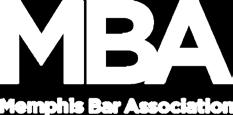
8:15 – 8:45 a.m.
Yoga to Restore Vitality
Cindy Pensoneau (0.5 Dual CLE hour)
9:00 – 9:45 a.m
Eat Like Your Life Depends On It
Dr. Jamie Hardy (.75 Dual CLE hour)
9:45 – 10:30 a.m.
Karate for Longevity:
Building Strength, Focus & Balance for a Lasting Legal Career
Justice Janice Holder (0.75 Dual CLE hour)
10:30 – 11:00 a.m.
From Attorney to Fitness Founder: A Journey of Power, Purpose & Presence
Ann Lee (0.5 Dual CLE hour)
11:15 a.m. – 12:15 p.m.
Building Resilience in Mind, Body, and Career: A Tactical Approach to Burnout, Addiction, and Performance in the Legal Profession
Dr. Lucas Trautman (1.0 Dual CLE hour)

12:15 – 12:45 p.m.
Lunch + Sponsor & Vendor Mingle
12:45 – 1:00 p.m.
Lunchtime Spotlight: Giving Back, Gaining More: The Personal Rewards of Pro Bono Work
Linda Seely (0.25 Dual CLE hour)
1:00-1:15 p.m.
Self-Care and Injury Prevention for Attorneys
Amanda Graham (.25 Dual CLE hour)
1:15 – 2:15 p.m.
Resilient by Design; Poised for Performance (Geared Specifically to Legal Professionals)
Dr. Tegan Reeves (1.0 Dual CLE hour)
2:15 – 3:15 p.m.
Stress Recovery for Lawyers: Sound Healing and Walking Meditation
Queen Keskessa (1.0 Dual CLE hour) (outdoors, weather permitting; indoors if inclement weather)
3:30 – 4:30 p.m.
Panel Discussion: Finding Meaning, Balance, and Connection to Thrive in Law
Moderator: Cindy Pensoneau
Panelists: Judge Tarik Sugarmon, Greg Graber
Michelle Johns, and Lisa Gill (1.0 Dual CLE hour)


Covers jury trials from January 1, 2025 – June 30, 2025
Sherronda Coleman v. Shelby County, Tenn., No. CT1111-19
Bench trial on January 27, 2025
Plaintiff’s attorney: David A. Gold
Defense attorneys: Bruce D. Brooke and Joshua P. Warren
Claim in complaint: GTLA premises liability for a slip and fall.
• Verdict: The court found for Plaintiff and awarded $27,359.86 in medical expenses; $100,000.00 for past, present, and future pain and suffering; and $15,000.00 for loss of enjoyment of life, for a total of $142,359.86 in damages.
Randy Gooden v. Bryant Johnson and Serra Chevrolet, LLC, No. CT-2172-22
Trial on February 11, 2025
Plaintiff’s attorney: Eric J. Lewellyn
Defense attorneys: Kevin Bernstein and Richard E. Smith
Claim in complaint: Negligence – car accident.
• Verdict: The jury found for Plaintiff and awarded $575,000.00 in damages.
Marie Freeman v. Regina Dunn, No. CT-3026-23
Trial on February 27, 2025
Plaintiff’s attorney: Kenneth Margolis
Defense attorney: Robert Moore
Claim in complaint: Negligence – car accident.
• Verdict: The jury found for Plaintiff and awarded $6,418.68 in medical expenses; $685.60 in loss of income; $10,000.00 for pain and suffering; $10,000.00 for loss of enjoyment of life; $20,000.00 for permanent scarring and disfigurement; and $15,000.00 for property damages, for a total of $62,104.28 in damages.
Kimberly Houston v. Anna Fletcher, No. CT-3061-23
Trial on May 19, 2025
Plaintiff’s attorney: Ryan M. Skertich
Defense attorneys: Stephen C. Barton and Patrick Quinn
Claim in complaint: Negligence – car accident.
• Verdict: The jury found for Plaintiff and awarded $27,950.00 in medical expenses and $57,410.00 each for past pain and suffering; future pain and suffering; past loss of enjoyment of life; future loss of enjoyment of life; and permanent injury, for a total of $315,000.00 in damages.
Matthew Plass v. John Kinsey and Jacklyn Goodwin, No. CT-4825-22
Trial on June 4, 2025
Plaintiff’s attorney: David A. Siegel
Defense attorneys: Dawn Carson, Andrew R.E. Plunk, Robert L. Moore, and Matthew Russell
Claim in complaint: Negligence – car accident.
• Verdict: The jury found for Plaintiff and awarded $25,000.00 in past pain and suffering; $75,000.00 for future pain and suffering; $42,239.66 for past medical expenses; $24,000.00 for future medical expenses; and $24,000.00 for past lost wages, for a total of $191,239.66 in damages.
Ronald Guy v. Barrett Delk, No. CT-1379-19
Trial on February 20, 2025
Plaintiff’s attorney: David Siegel
Defense attorney: James “Trey” McLain
UM carrier attorney: James E. King, Jr.
• Claim in complaint: Negligence – car accident.
• Verdict: The jury found for Plaintiff and awarded $6,634.00 in medical bills as damages.
No trials.
Easley Contractors, Inc. v. Joe and Carla Poulin, No. CT-0954-23
Bench trial on January 21, 2025
Plaintiff’s attorney: Nicholas J. Owens, Jr.
Defendant proceeded pro se.
Claim in complaint: Breach of Contract (Home Repairs)
• Verdict: The court awarded Plaintiff $33,981.33 in damages and $11,327.11 in attorney’s fees.

Joshua Tapplin v. Amberlynn Parker and Christopher Parker, No. CT-1301-22
Trial on March 17, 2025
Plaintiff’s attorney: Jack Leach
Defendants’ attorney: Ashleigh C. Kiss
Claim in complaint: Negligence – car accident.
• Verdict: The jury found for Plaintiff and awarded $13,450.64 in medical expenses.
Jermonta Walker v. Rivers Powell, No. CT-4070-21
Trial on March 20, 2025
Plaintiff’s attorney: W. David Cheek
Defense attorneys: Kip Whitmore and Michael S. Russell
Claim in complaint: Negligence – car accident.
• Verdict: The jury found for Plaintiff and awarded a gross verdict of $31,360.00 less 20% comparative fault, lowering the damages to $21,952.00; $31,000.00 in medical expenses; and $360.00 in lost earnings.
Advantage Property Management v. Corey Lee, Sir Newton Lee and All Occupants, No. CT-21125-24
Bench Trial on May 22, 2025
Plaintiff’s attorney: Morgan S. Pettigrew
Defendant proceeded pro se.
Claim in complaint: breach of contract (FED)
• Verdict: The court found for Plaintiff and awarded $62,868.31.
Benjamin Vasquez v. Deborah Onsongo and Bethwell Luyanje, No. CT-2298-22,
Trial on April 25, 2025
Plaintiff’s attorneys: Ralph T. Gibson and Alexandria R. Scott
Defense attorney: Melanie Stewart
Claim in complaint: Negligence – car accident.
• Verdict: The jury found for Plaintiff and awarded $64,131.15 in medical expenses; $10,660.00 in lost wages; and $25,285.00 in pain and suffering, for a total of $100,000.00 in damages.
Tisha Baker, BT, a Minor by and through Victoria Taylor and MR, a Minor by and through Lavetta Rossell v. Georgeana W. Butts and Gregory Kelley, No. CT-5026-21
Trial on February 4, 2025
Plaintiff’s attorneys: Robert L.J. Spence, Jr. and Jarrett M.D. Spence
Defense attorneys: Nicholas Owens and Ashleigh Kiss
Claim in complaint: Negligence – car accident.
• Verdict: The jury found for Plaintiff and awarded $15,301.00 in medical expenses; $10,000.00 for physical pain and suffering; and $7,500.00 in loss of enjoyment of life, for a total of $32,801.00.

City of Bartlett v. Carolyn Hamilton, No. CT-1767-25
Bench trial on May 28, 2025
Plaintiff’s attorney: Phillip R. Walker Defendant proceeded pro se.
Claim in complaint: Appeal of a traffic ticket.
• Verdict: The court found for Plaintiff and affirmed the $50.00 ticket.
No trials.
Steven Davis and Shatamara Davis Individually and on behalf of S.D., J.L. and S.D. v. Thomas G. Bryant, No. CT-4388-22
Trial on February 25, 2025
Plaintiffs' attorneys: Robert A. Pope and Khalia Word Defense attorney: Nicholas Owens, Jr.
Claim in complaint: Negligence – car accident.
• Verdict: The jury found for Plaintiffs and awarded each plaintiff $10,000.00 in damages, for a total of $50,000.00.
Memphis Light Gas and Water Division v. Alexandra Bobo and Cortese Christopher, No. CT-4689-19
Bench trial on January 13, 2025
Plaintiff’s attorney: Thomas Branch
Defense attorney: Beth Brooks
Claim in complaint: Negligence – car accident that damaged a light pole.
• Verdict: The court found for Plaintiff and awarded $7,023.55 in damages.


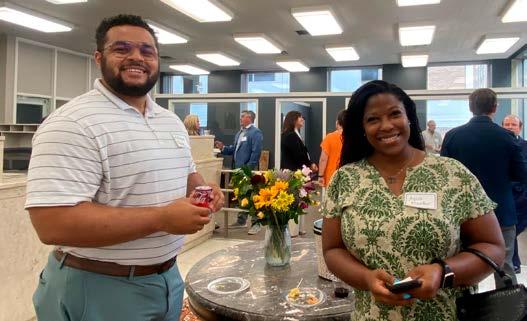
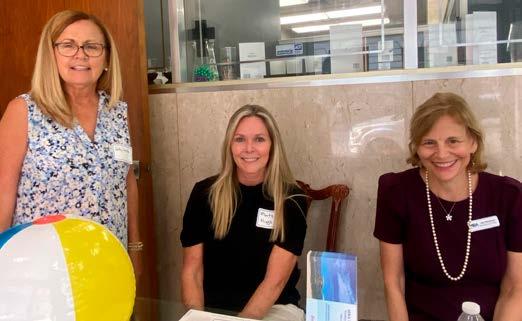
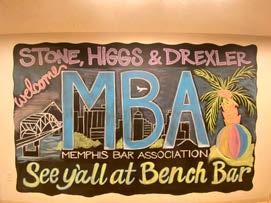





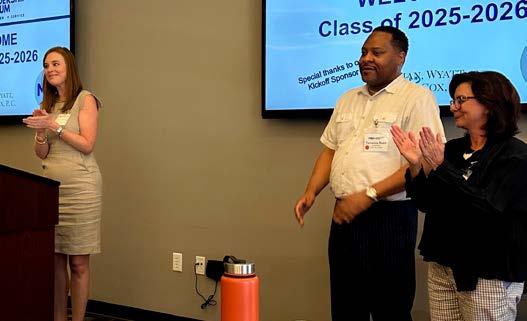














Sara K. McKinney has joined Glankler Brown, PLLC as an associate. McKinney concentrates her practice in the areas of commercial and business litigation and medical malpractice. She received her undergraduate degree from The University of Tennessee and her law degree from the University of Memphis. She previously worked at Apperson Crump after graduating from Memphis Law. McKinney is a member of the Memphis and Tennessee Bar Associations and the Association for Women Attorneys.
Nathan A. Bicks, a member of Burch, Porter and Johnson, PLLC in Memphis, has been named to the inaugural Forbes Bestin-State Lawyers 2025 list, recognizing his practice in government relations. The list highlights accomplished attorneys in private practice from across all 50 states. Honorees were determined based on a rigorous, multistage editorial research and analysis process to identify the finest members of the legal profession: lawyers with impressive track records in their specialties, leaders in their fields, and attorneys most respected by peers and clients. Bicks is one of only seven Tennessee lawyers listed.

MBA Access to Justice Chair Constance Brown, who works as an anti-blight prosecutor for the City of Memphis, has been chosen to serve as Board Chair for the Community Legal Center. She is a two-time recipient of the Memphis Bar Association’s Champion of Justice Award and was recently recognized by the Tennessee Supreme Court as a 2024 Attorney for Justice for her outstanding pro bono work. Constance also serves on multiple boards and bar associations.

Reagan Taylor Fondren, a twenty-year veteran of the Department of Justice who served as Acting U.S. Attorney and First Assistant U.S. Attorney for the Western District of Tennessee, has joined Burch, Porter & Johnson, PLLC. Fondren will practice in the firm’s governmental investigations, criminal defense, commercial litigation, and municipal law practice groups.

On August 25, 2025, the Shelby County Commission appointed Judge Marcy Ingram, who will take the bench in Shelby County General Sessions Civil Court Division 2, which is the vacancy created by Judge Phyllis Gardner’s retirement. She served as an attorney and legal advisor to the Shelby County Commission before her appointment and previously worked for Shelby County Government in various roles. Judge Ingram earned her bachelor’s degree and M.Ed. from the University of Tennessee at Martin, her Ed.D and M.B.A. at Trevecca Nazarene University, and her J.D. at Cecil C. Humphreys School of Law.
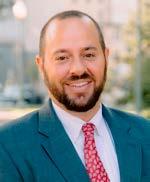
On August 28, 2025, Governor Lee appointed two new judges in Shelby County. Judge Chris Frulla will take the bench in Shelby County Circuit Court Division III, which is the vacancy created by Judge Valerie Smith’s elevation to the Tennessee Court of Appeals. He served as a partner at Rainey, Kizer, Reviere & Bell, PLC when the Governor appointed him. Judge Frulla earned his bachelor’s degree at University of Oregon and juris doctor at Cecil C. Humphreys School of Law. Judge Raymond Lepone will take the bench in Shelby County Criminal Court Division I, which is the vacancy created by Judge Paula Skahan’ retirement. He served as an Assistant Attorney General in the Office of the Tennessee Attorney General within the Criminal Appeals Division when the Governor appointed him. Judge Lepone earned his bachelor’s degree at Kennesaw State University and juris doctor at Cecil C. Humphreys School of Law.

If you are an MBA member in good standing and you’ve moved, been promoted, hired an associate, taken on a partner, or received an award, we’d like to hear from you. We will not print notices of honors determined by other publications (e.g., Super Lawyers, Best Lawyers). Notices are limited to 100 words; they are printed at no cost to members and are subject to editing. E-mail your notice and hi-resolution photo (300 dpi) to kswan@memphisbar.org.
